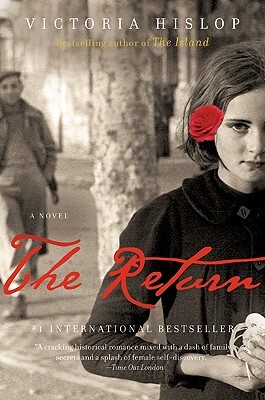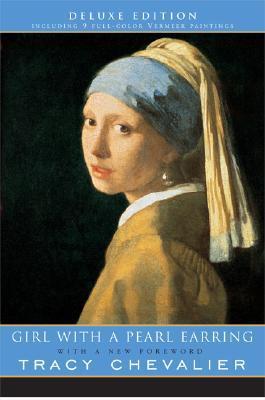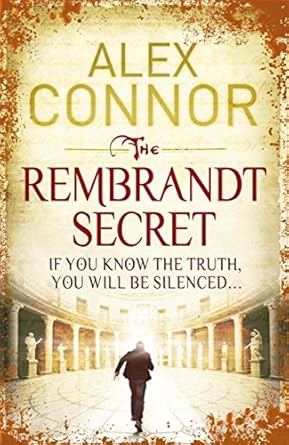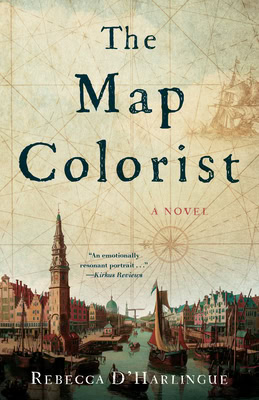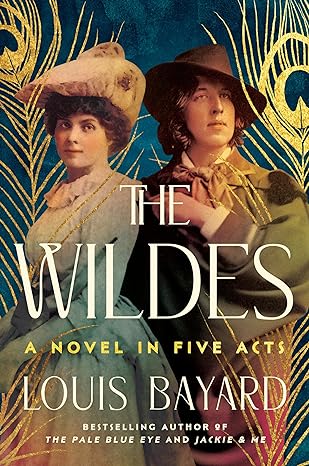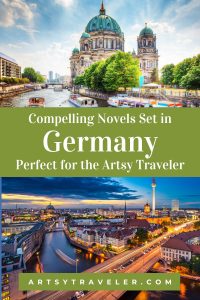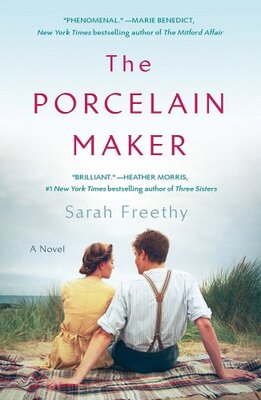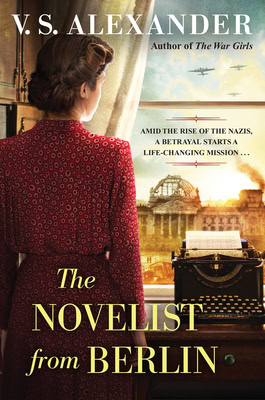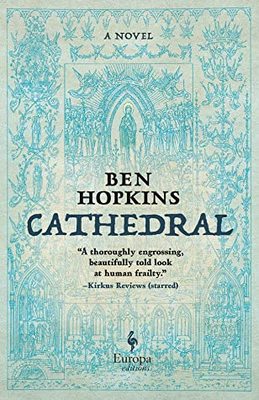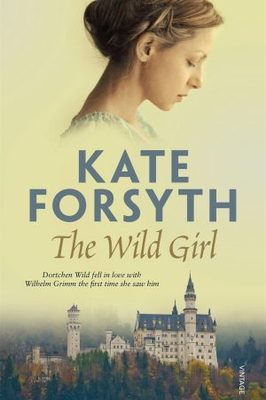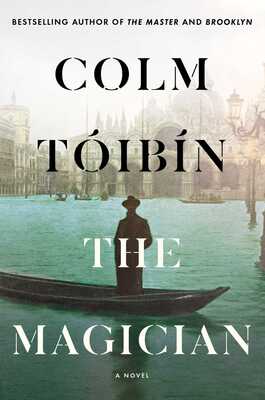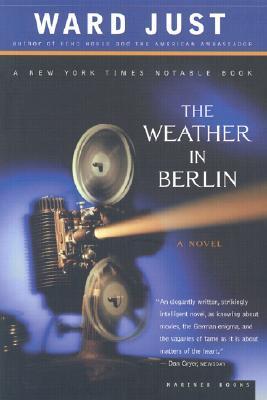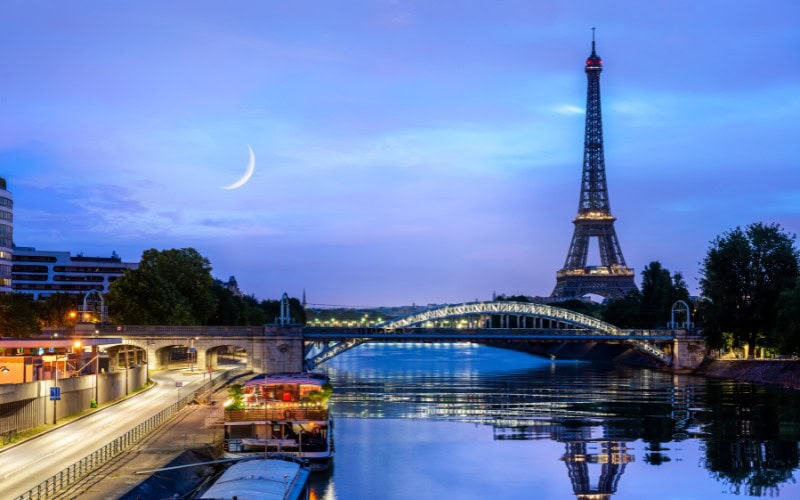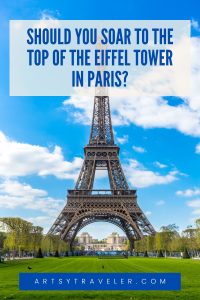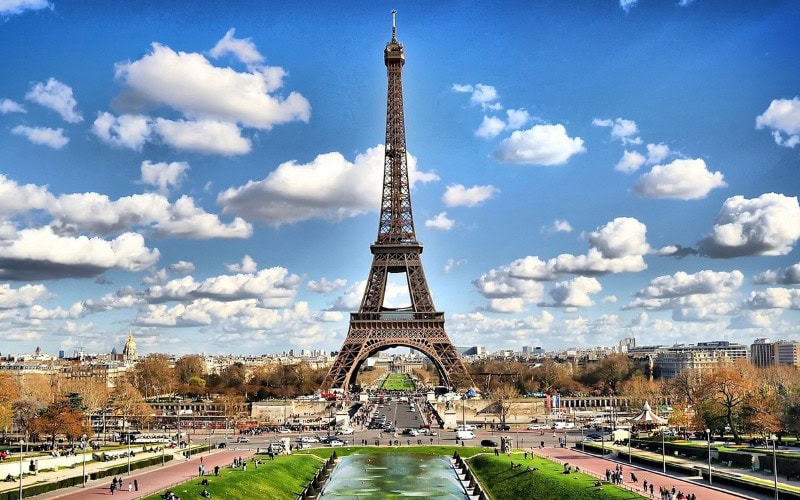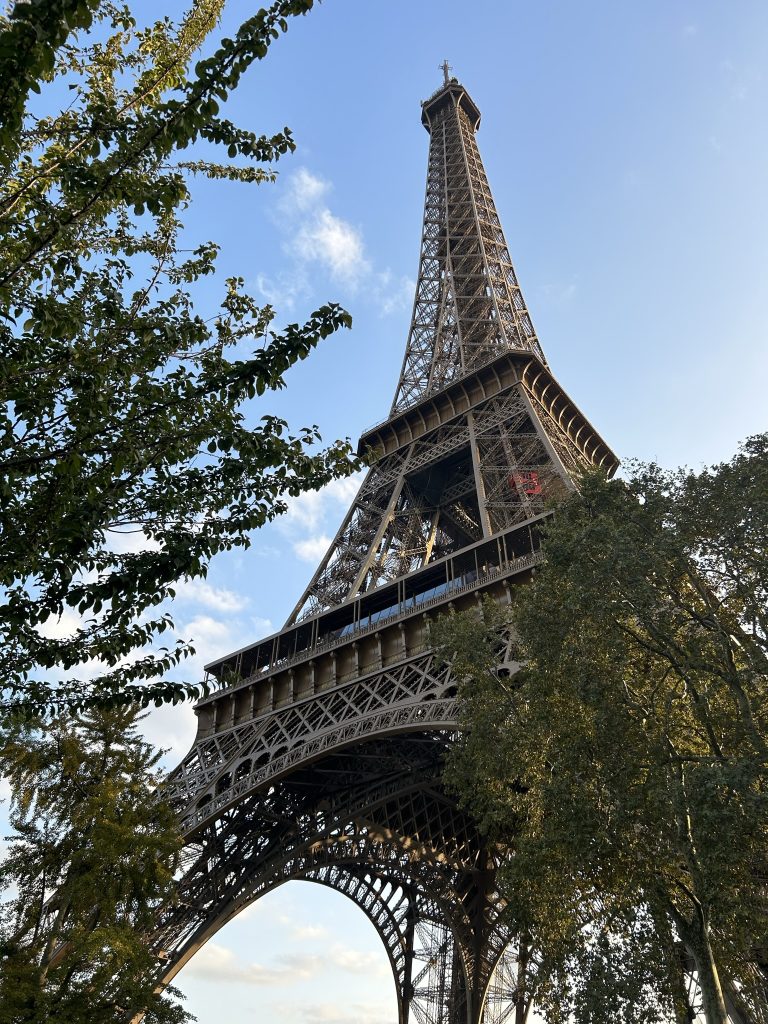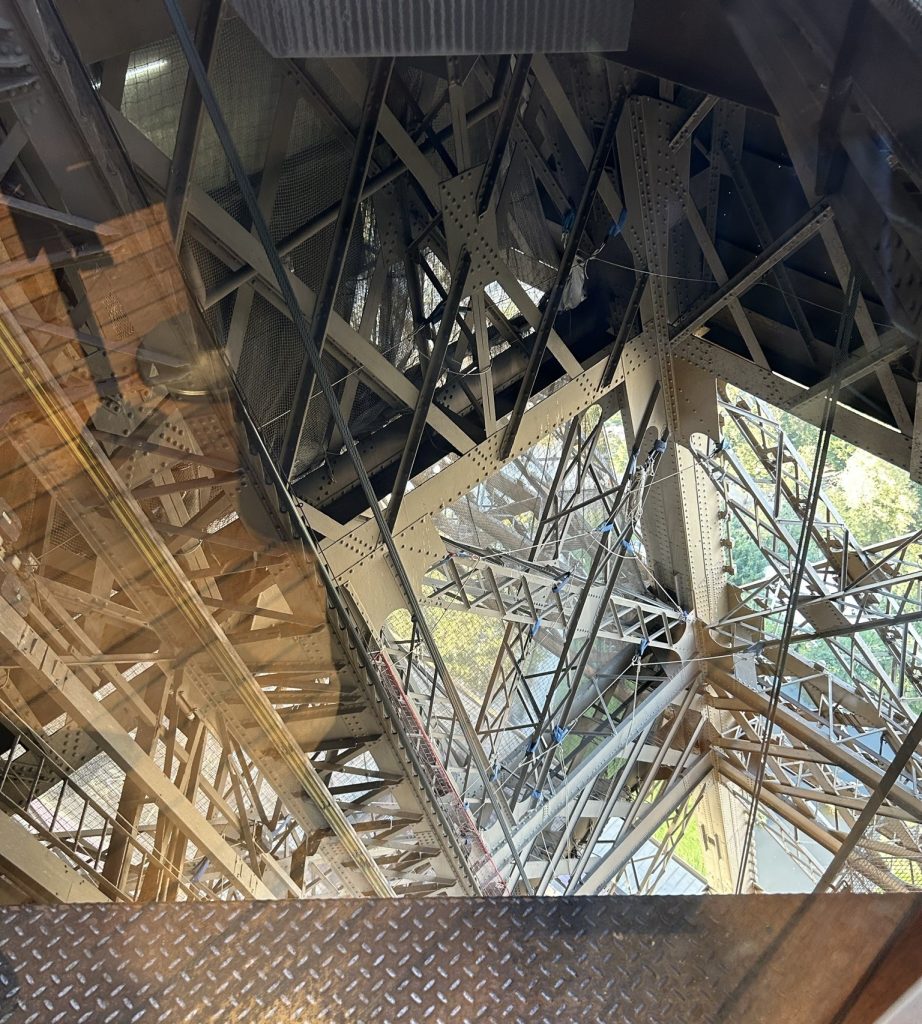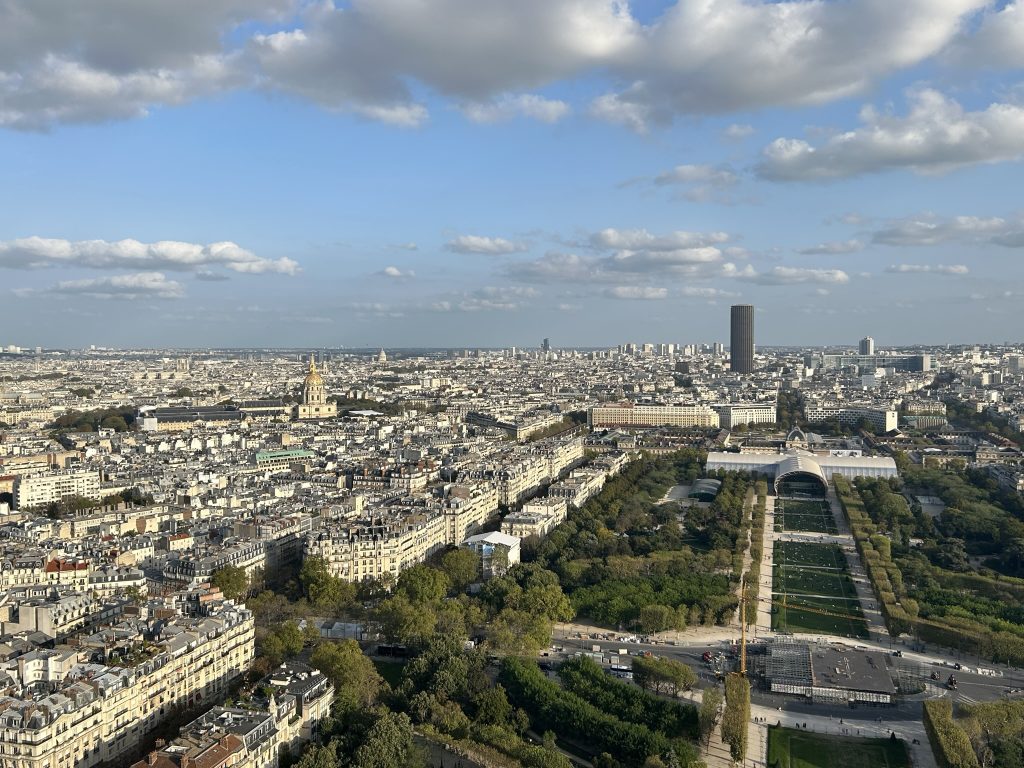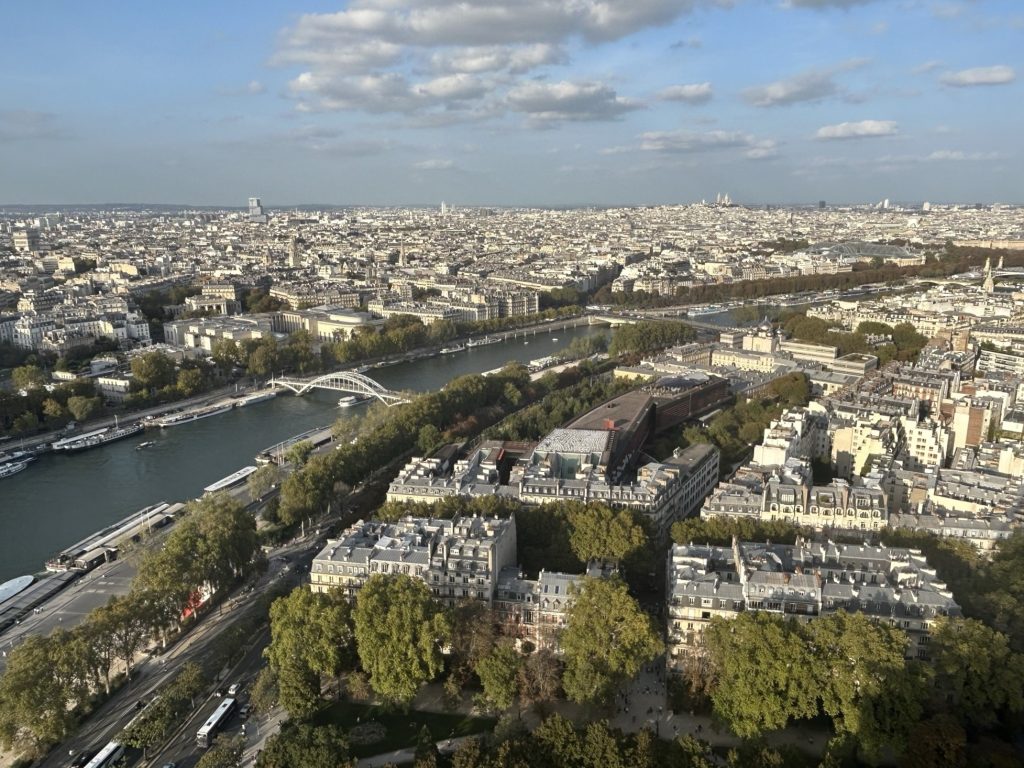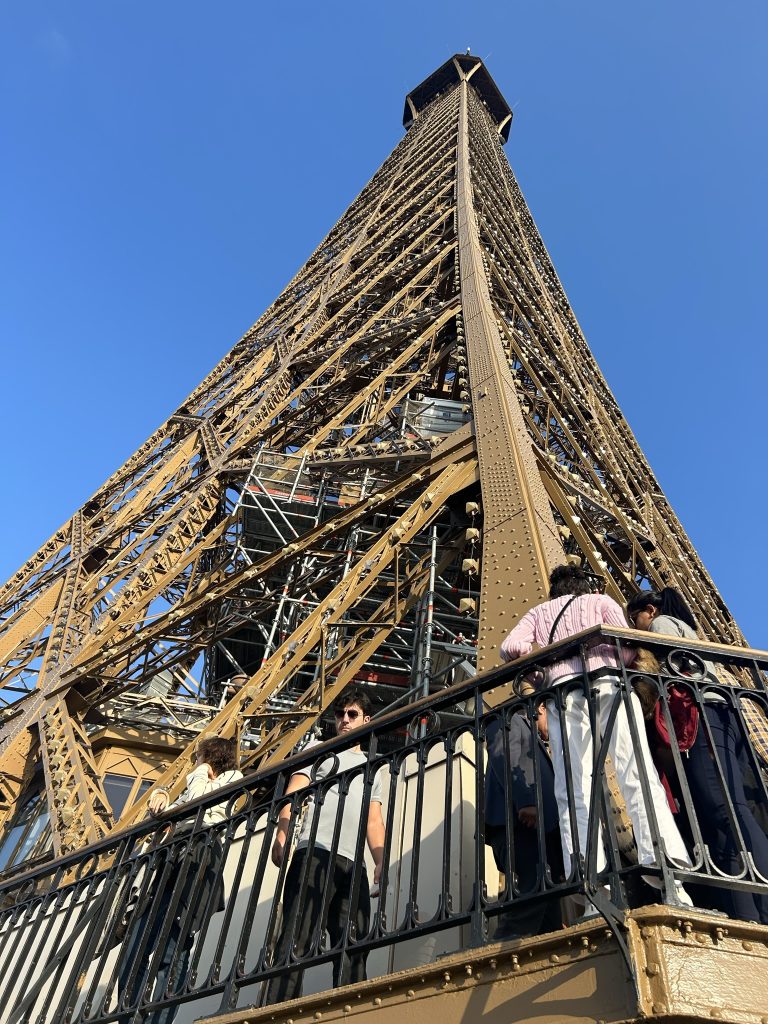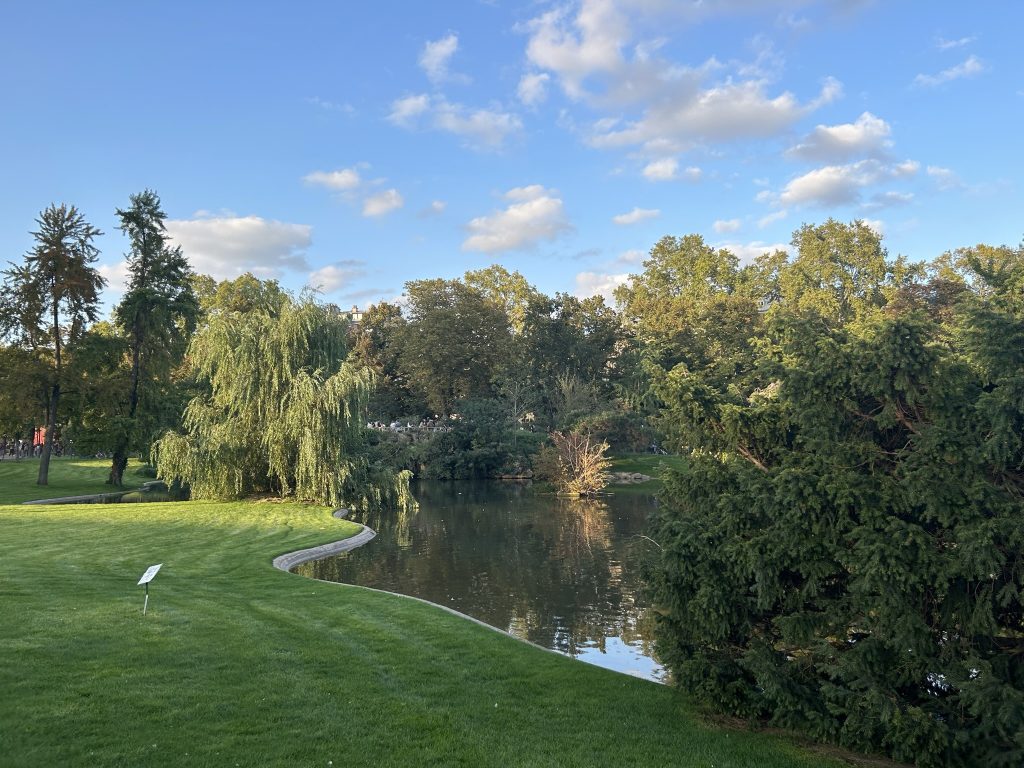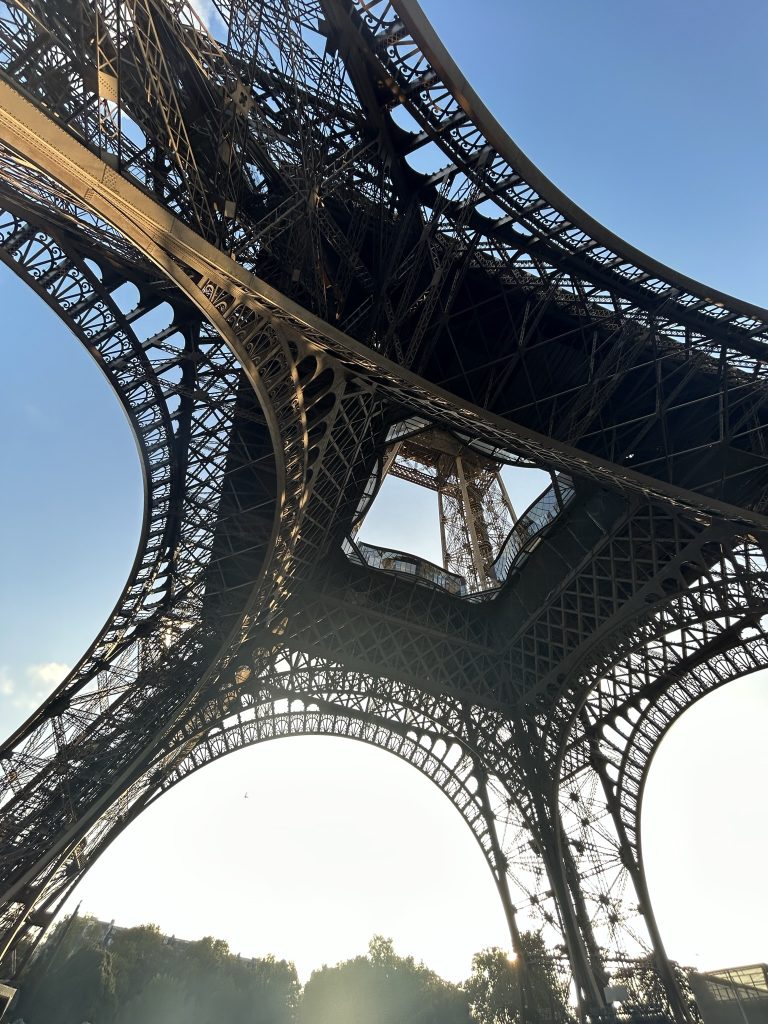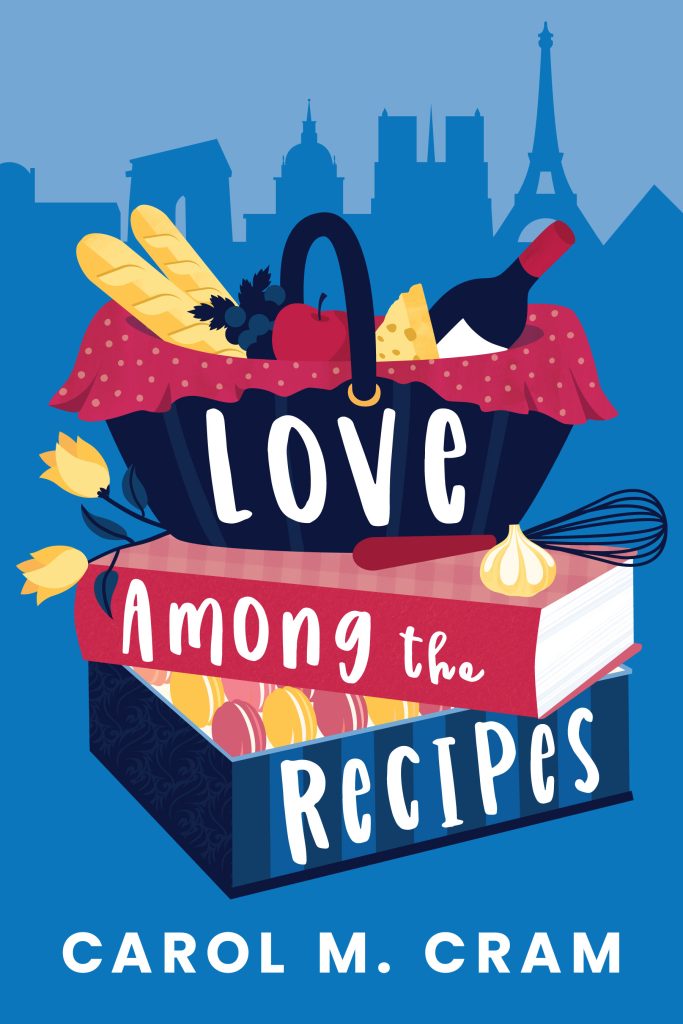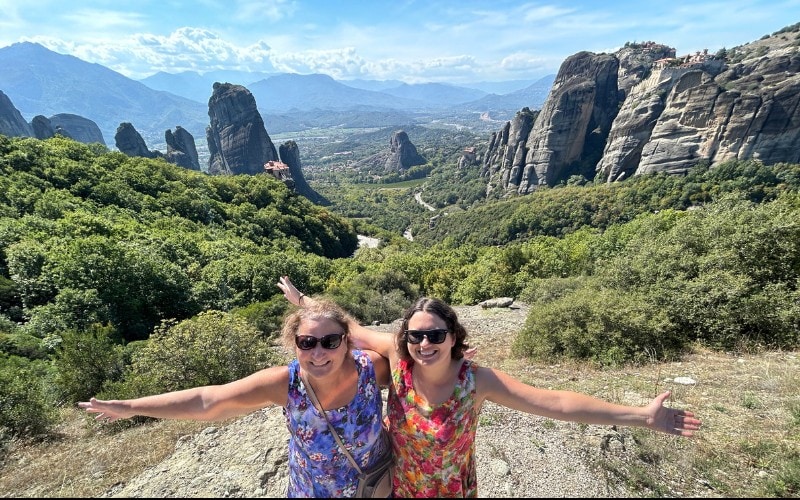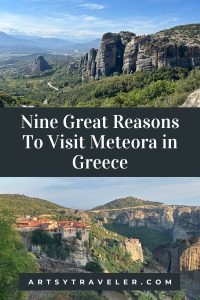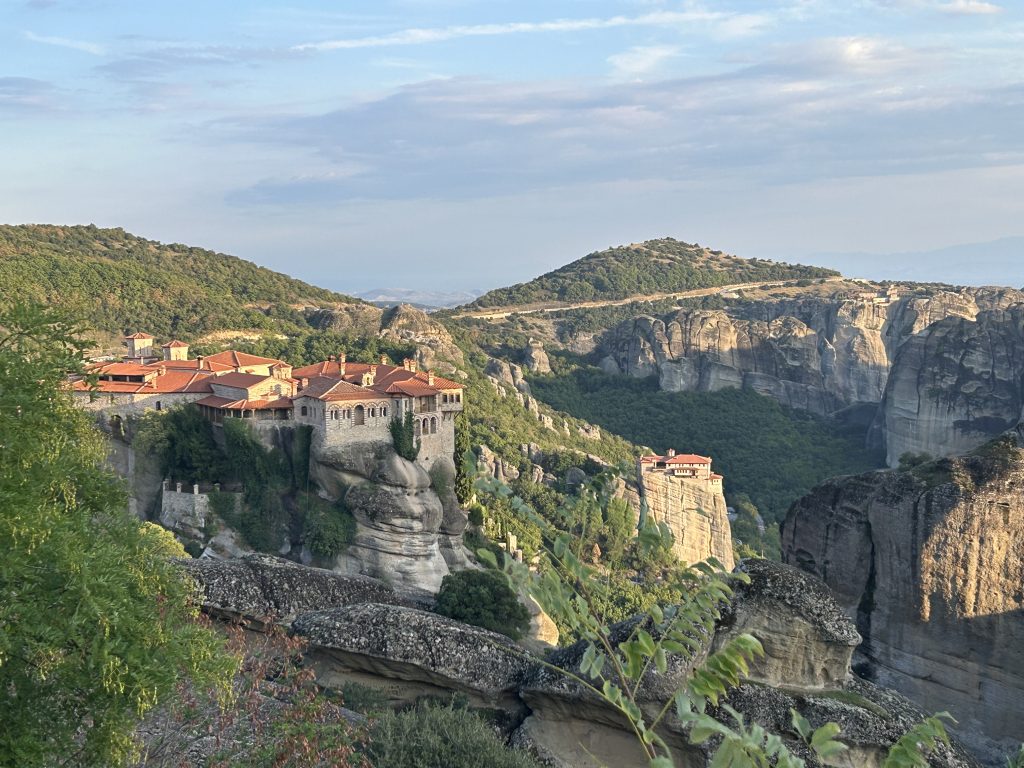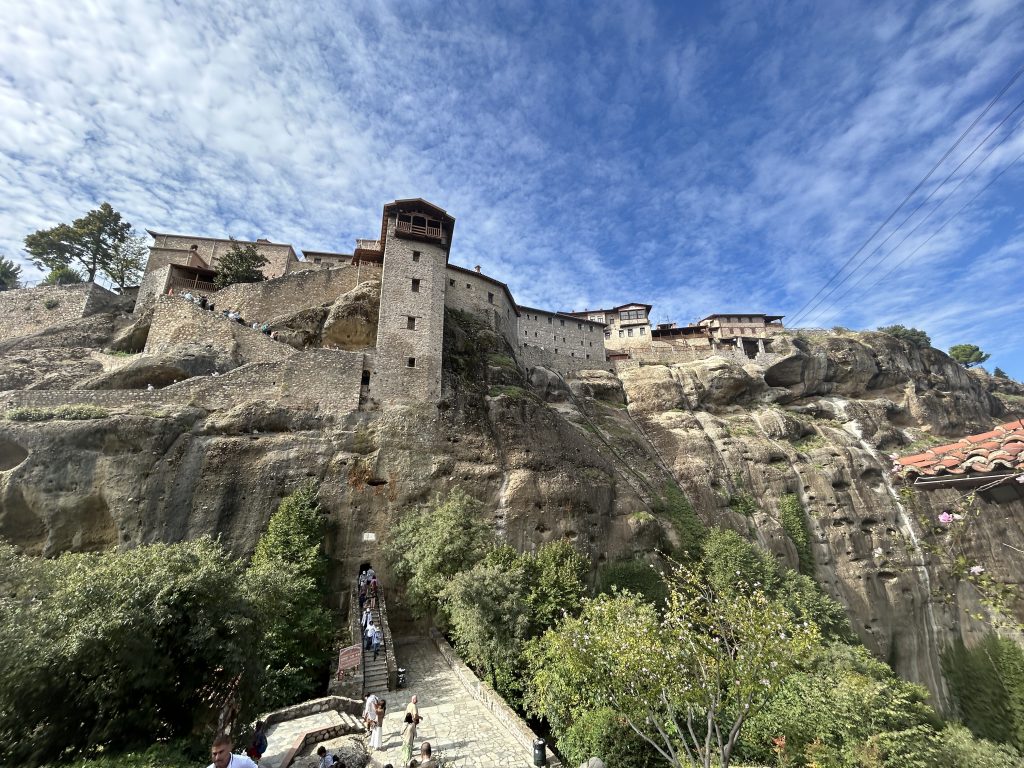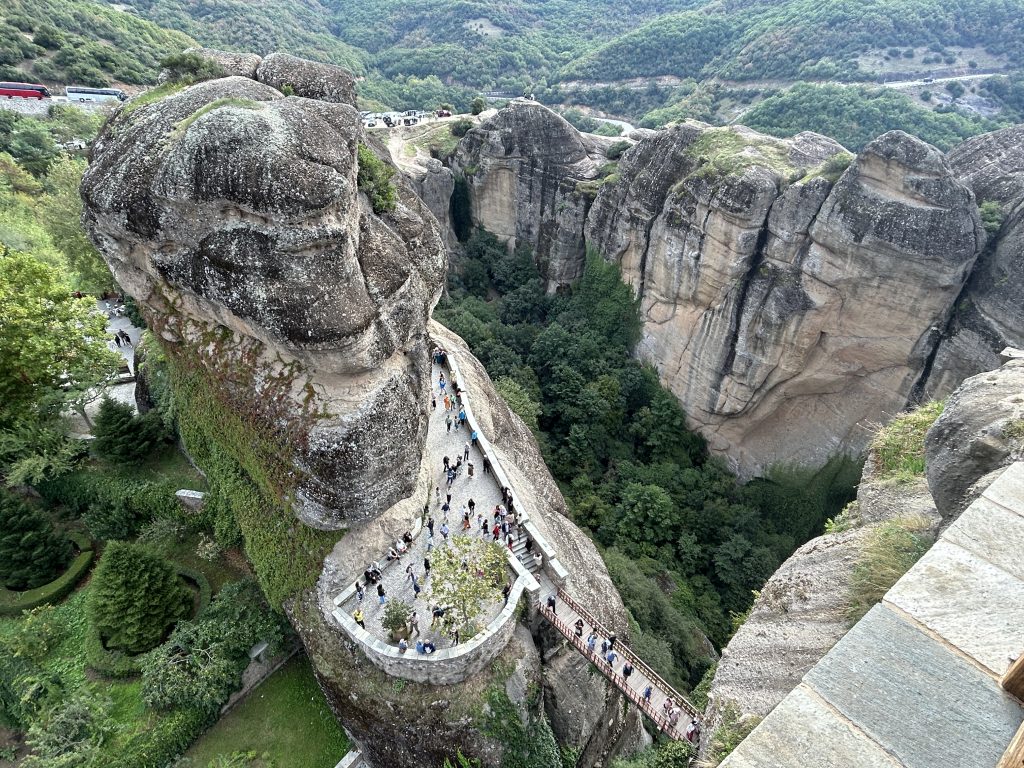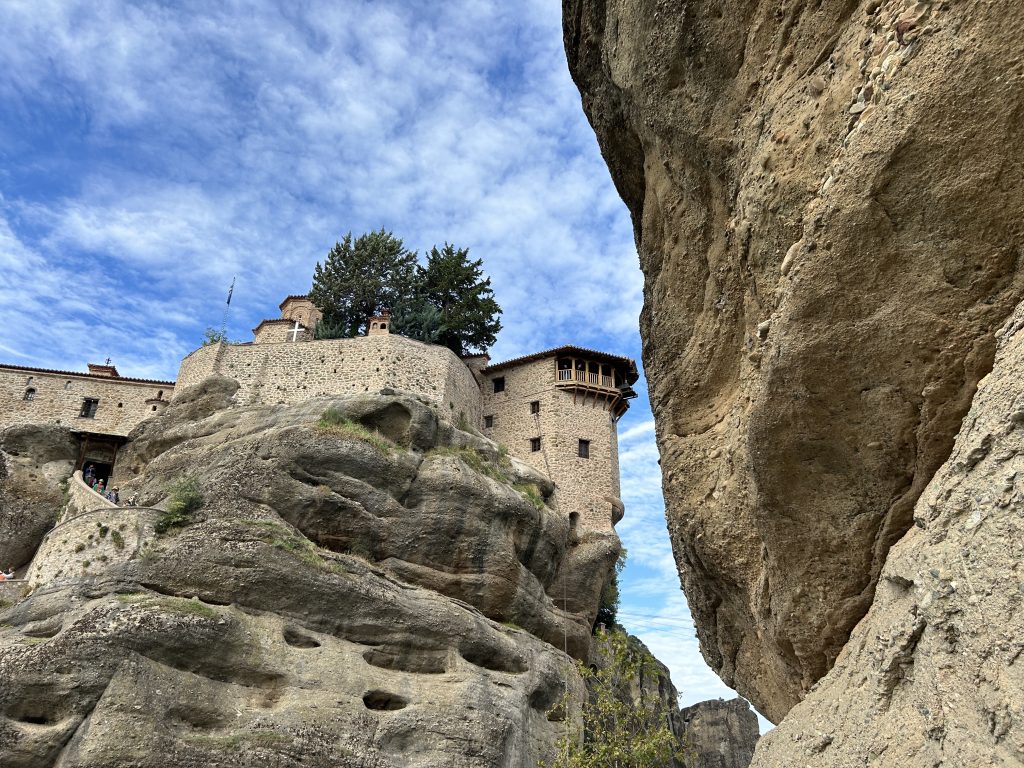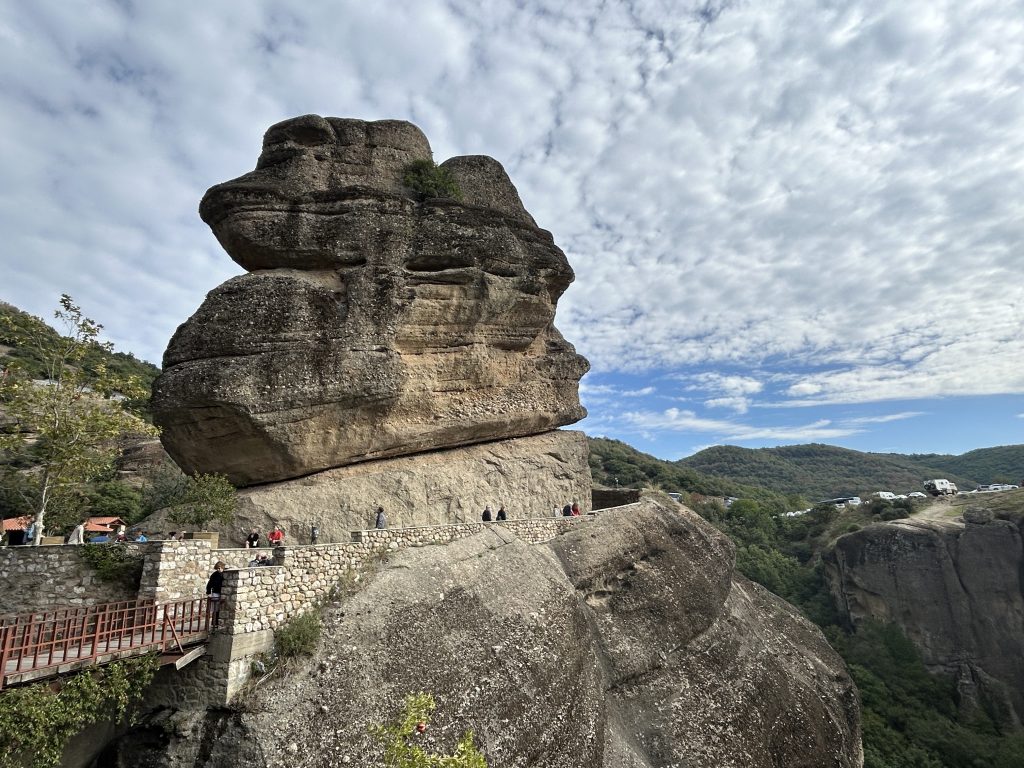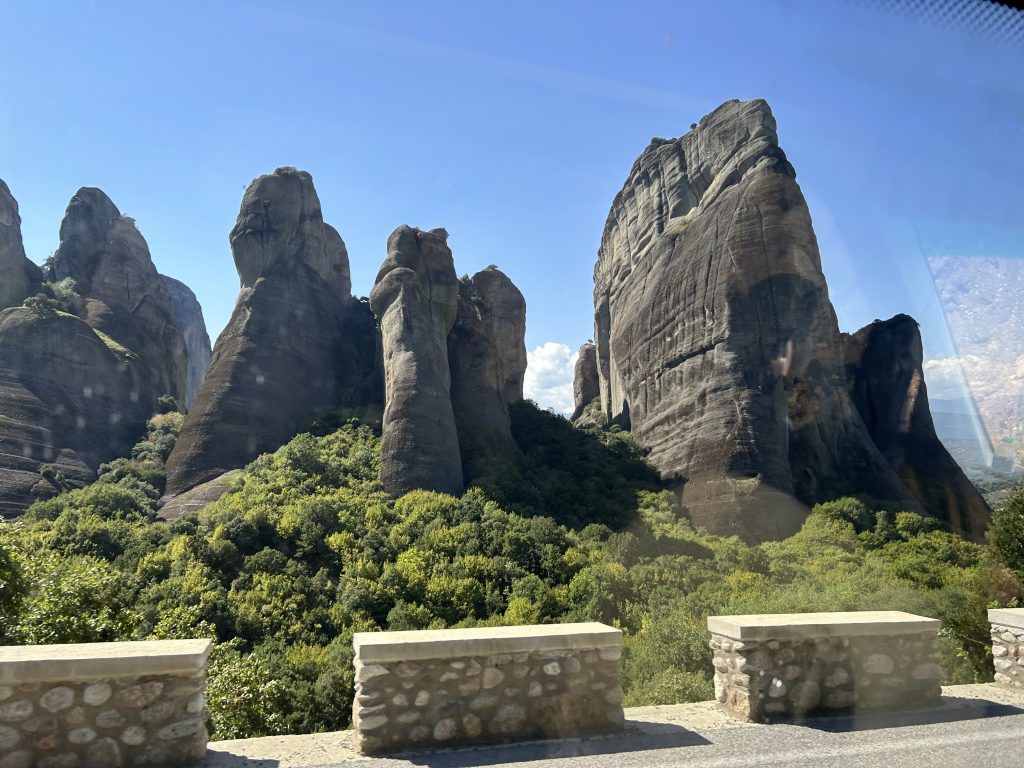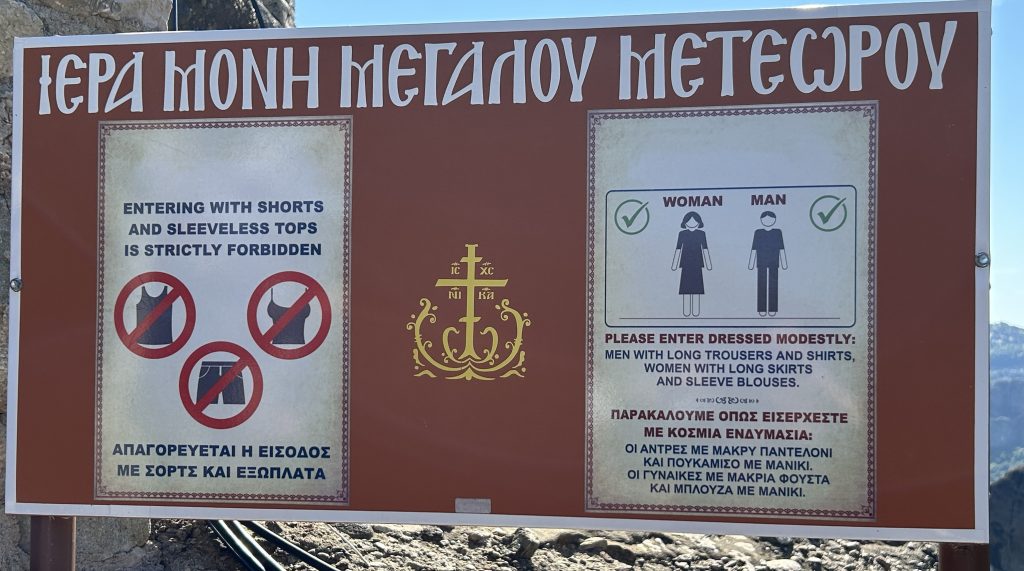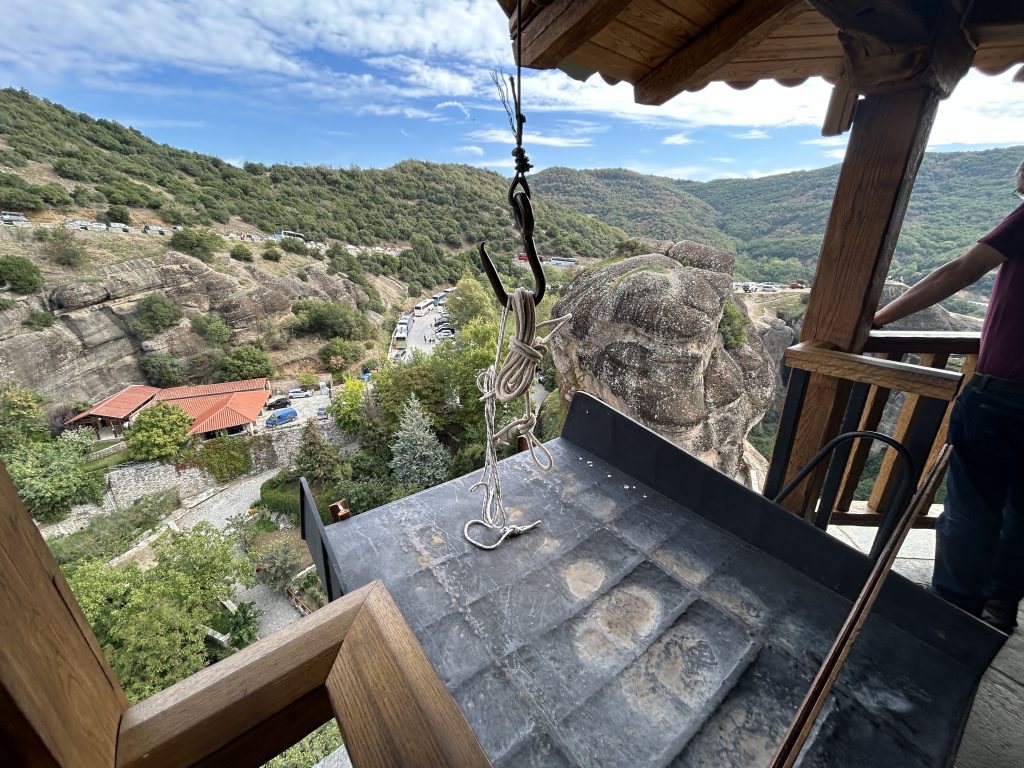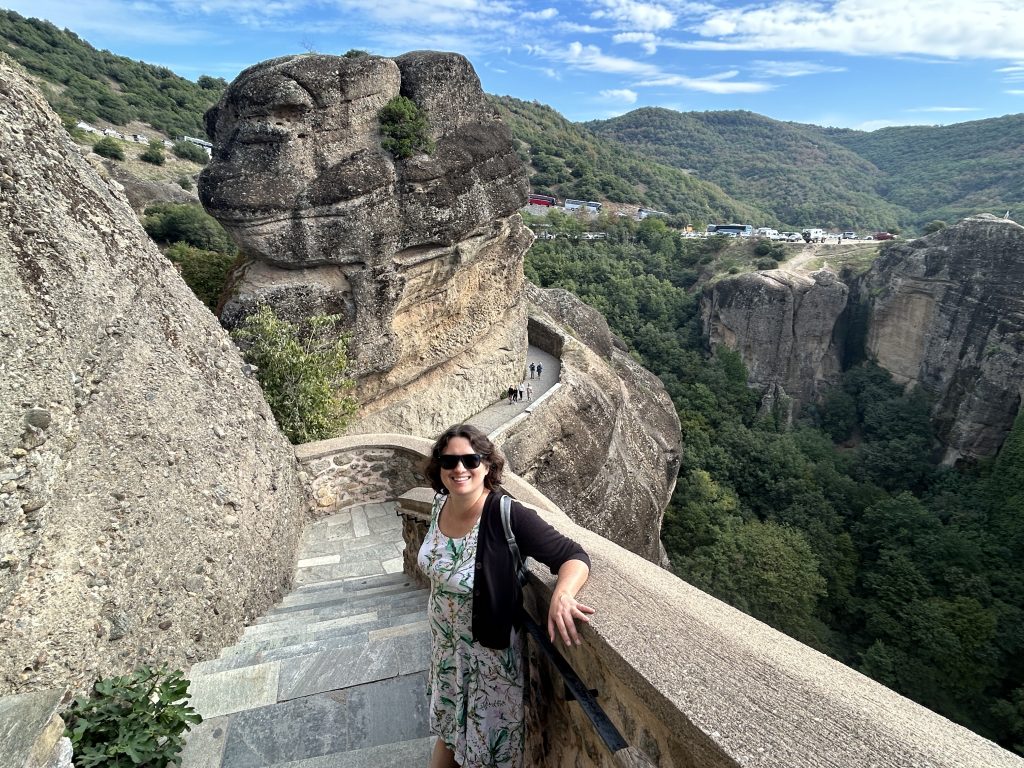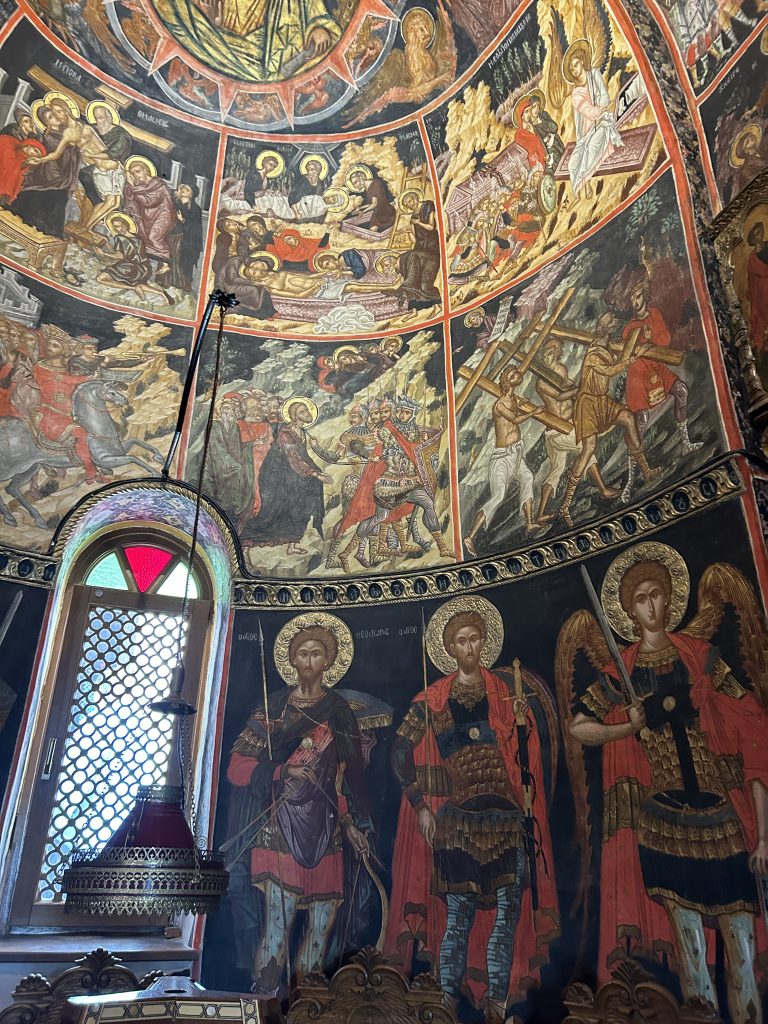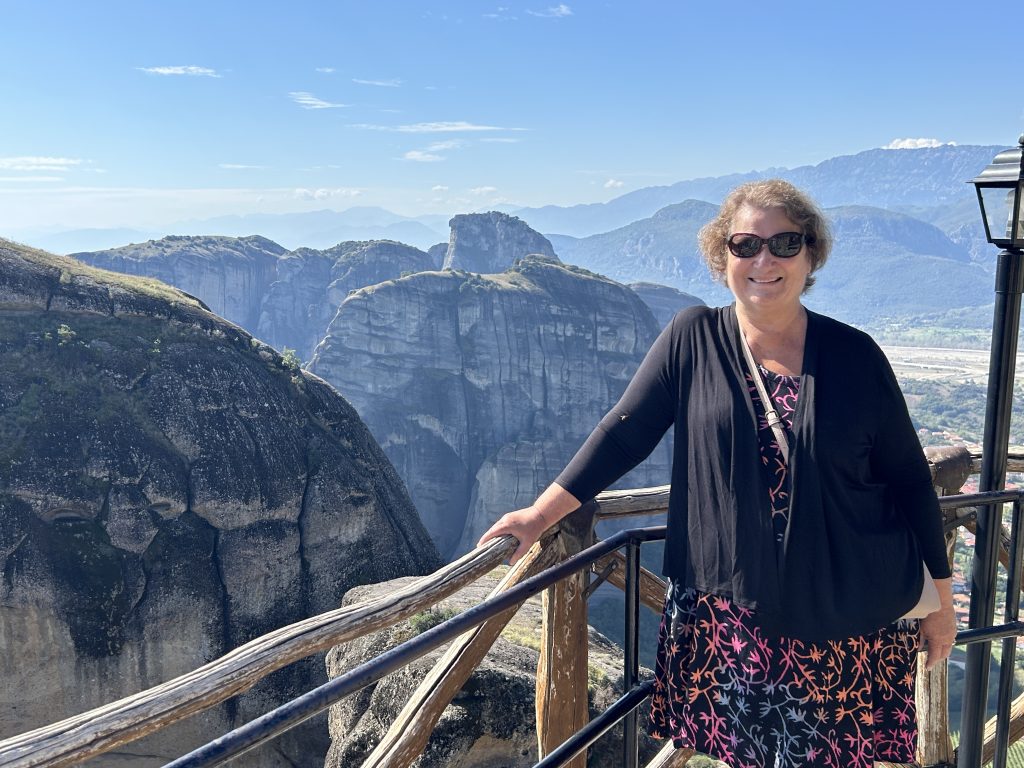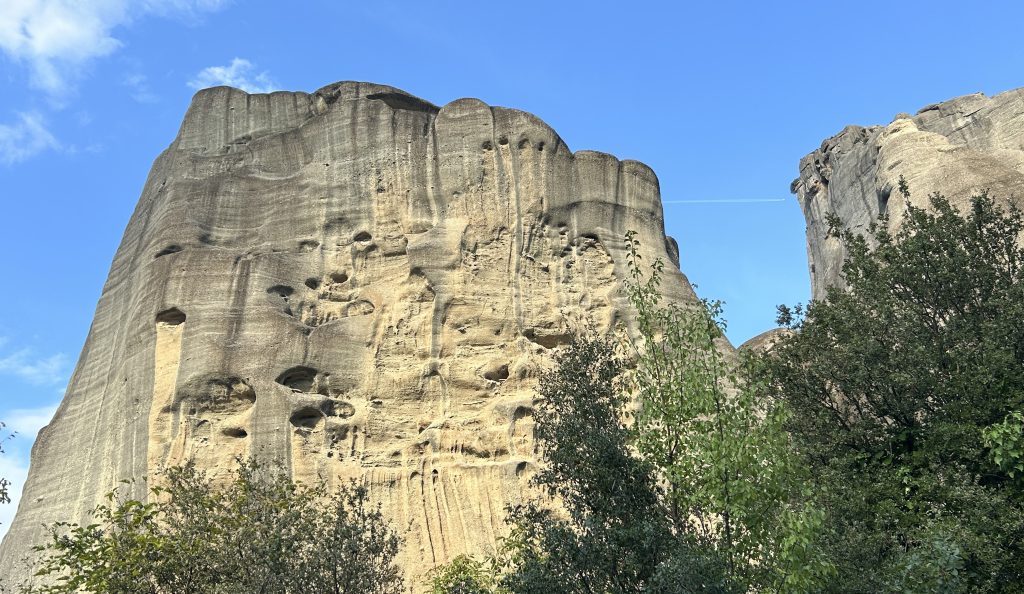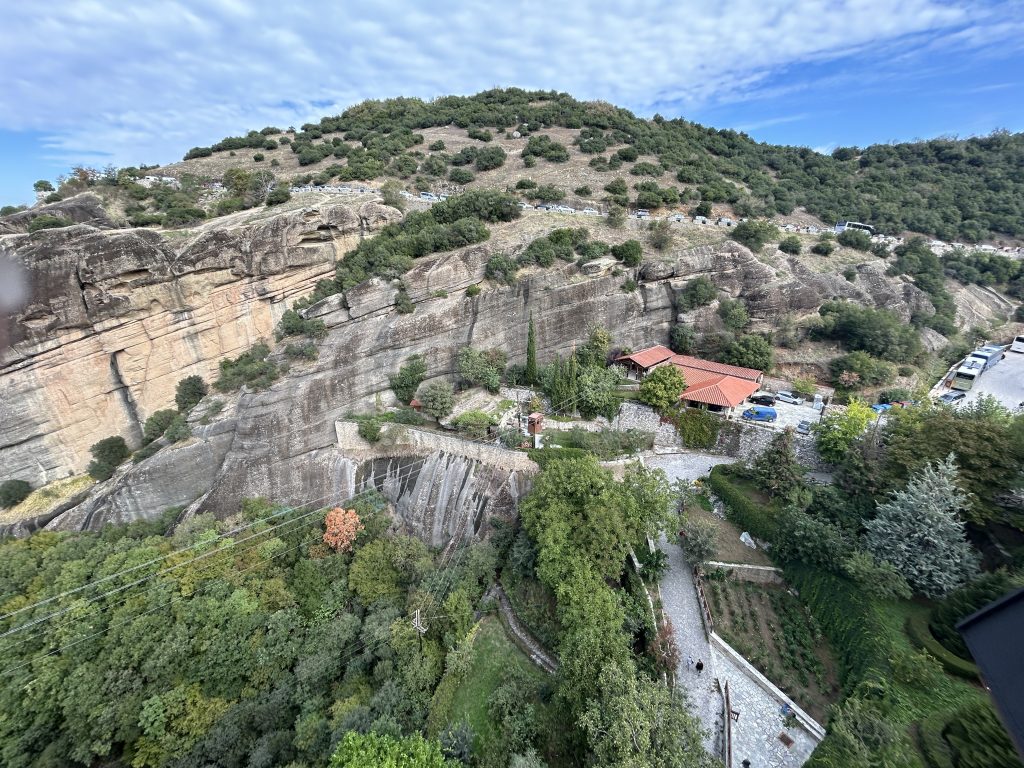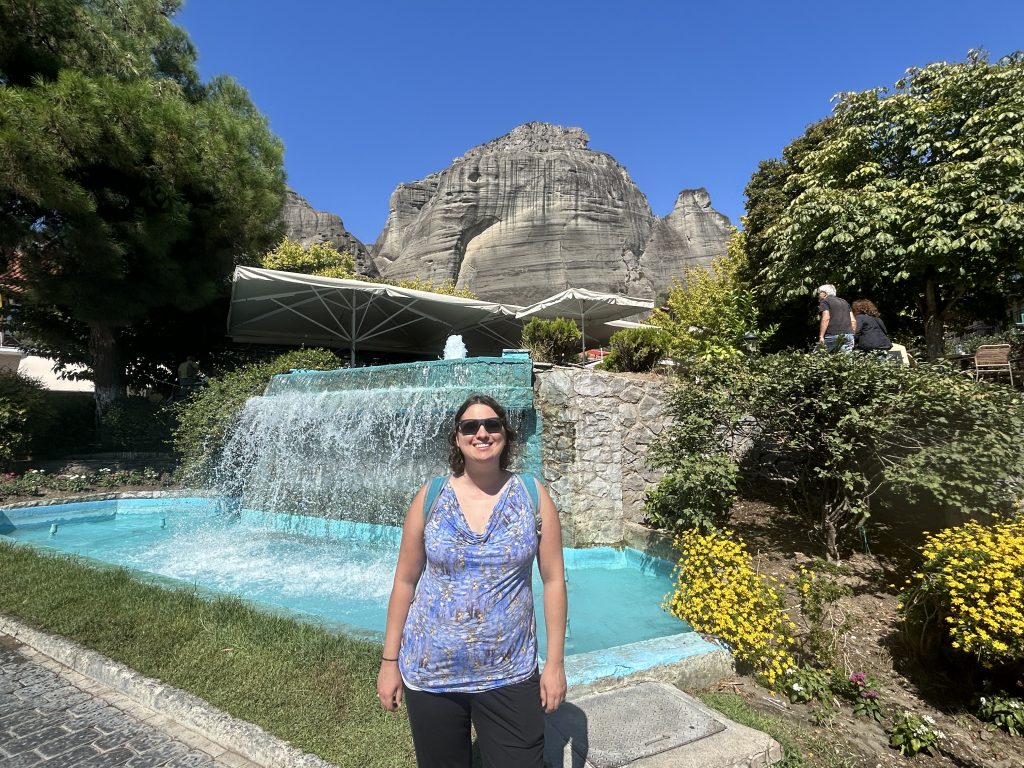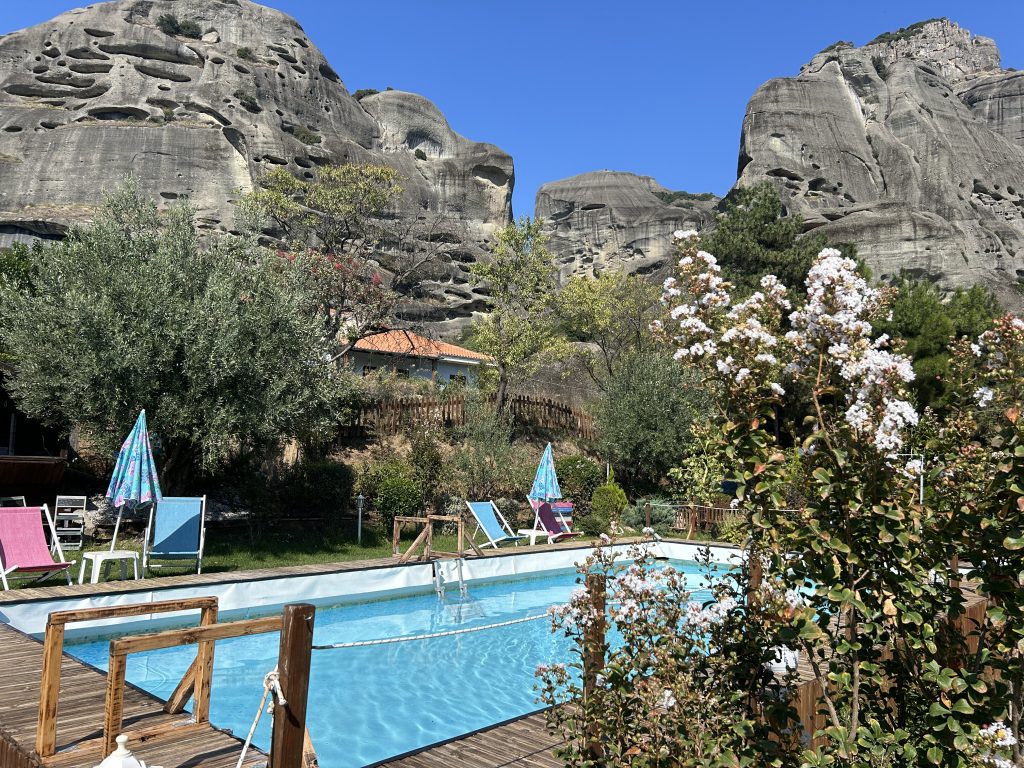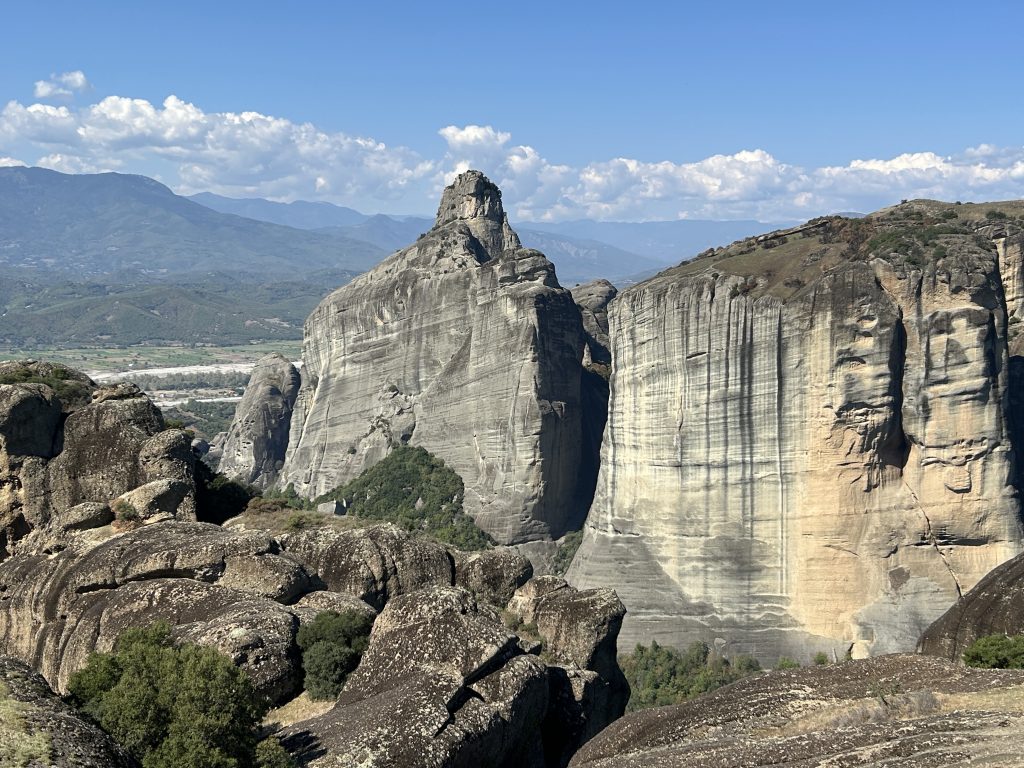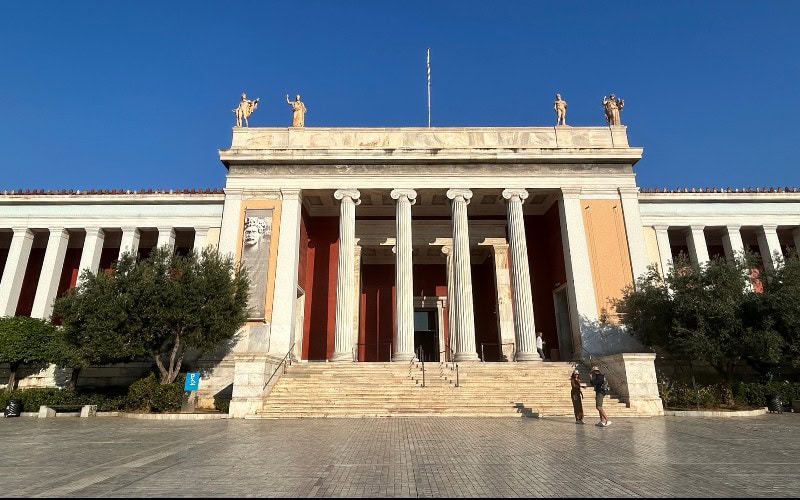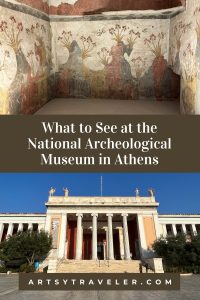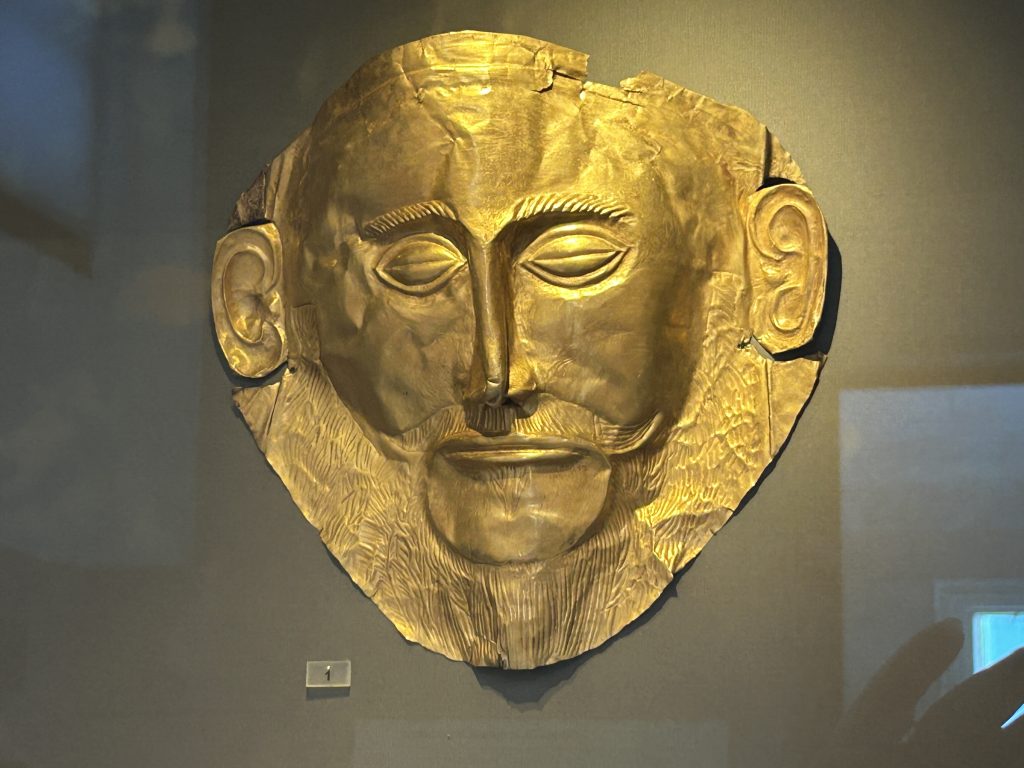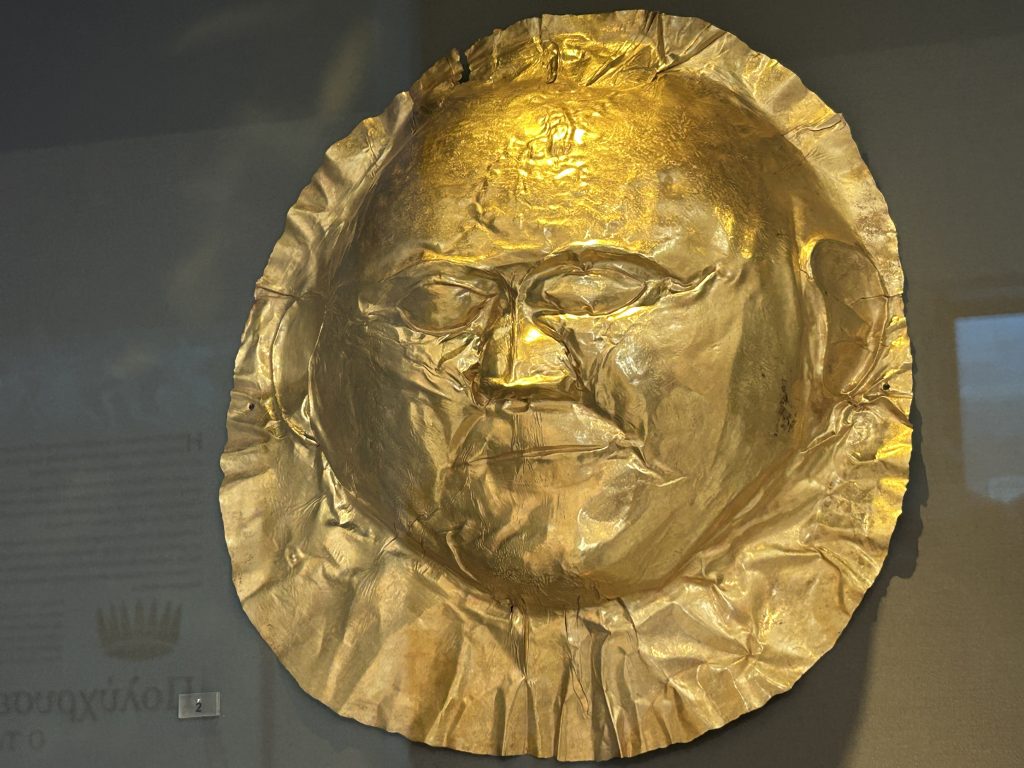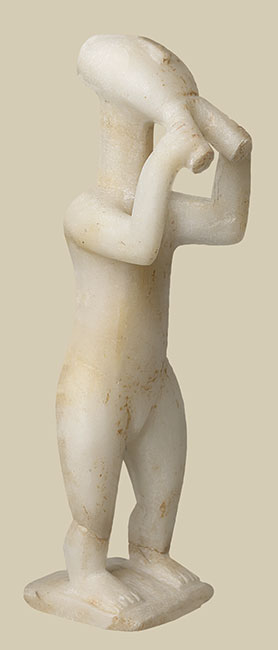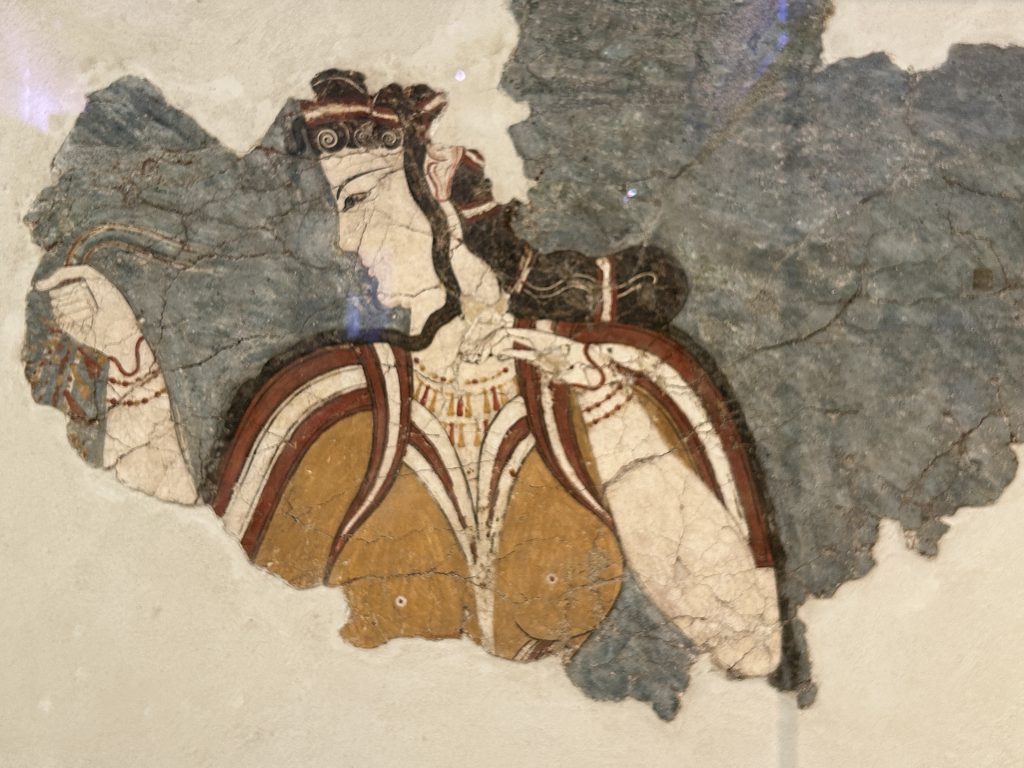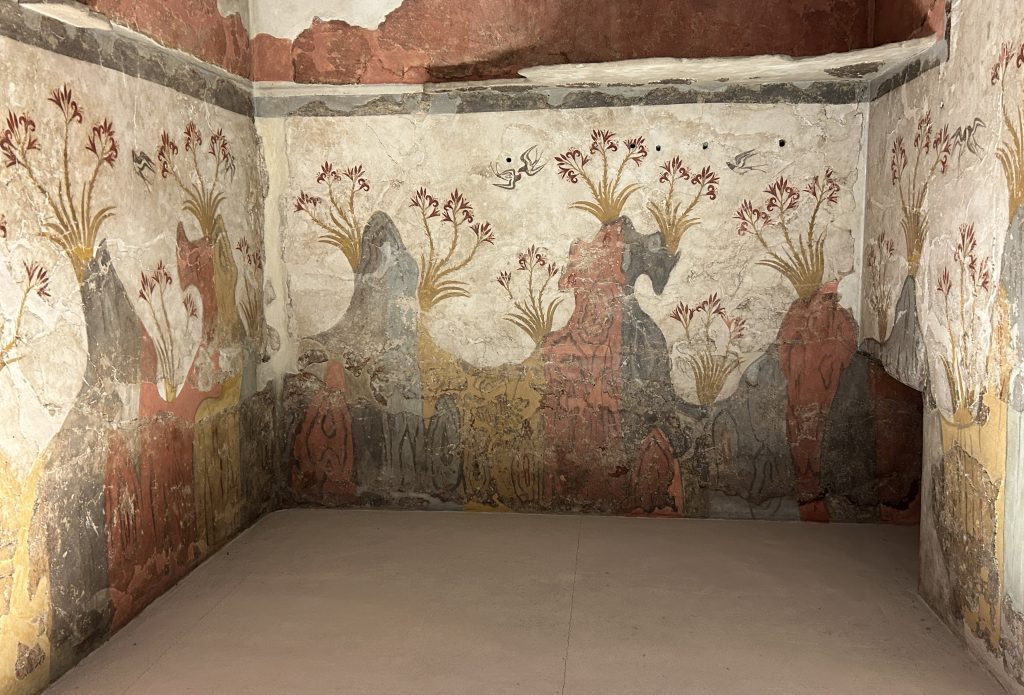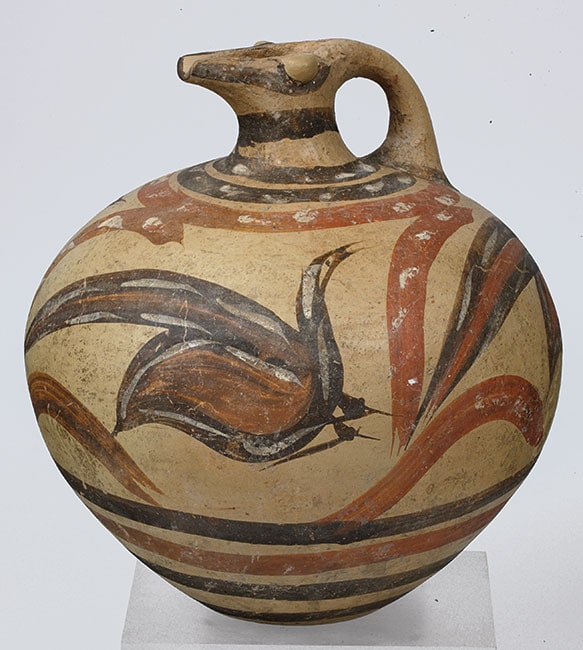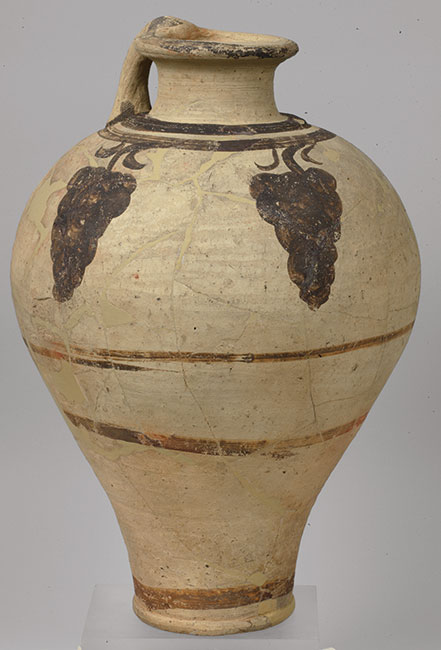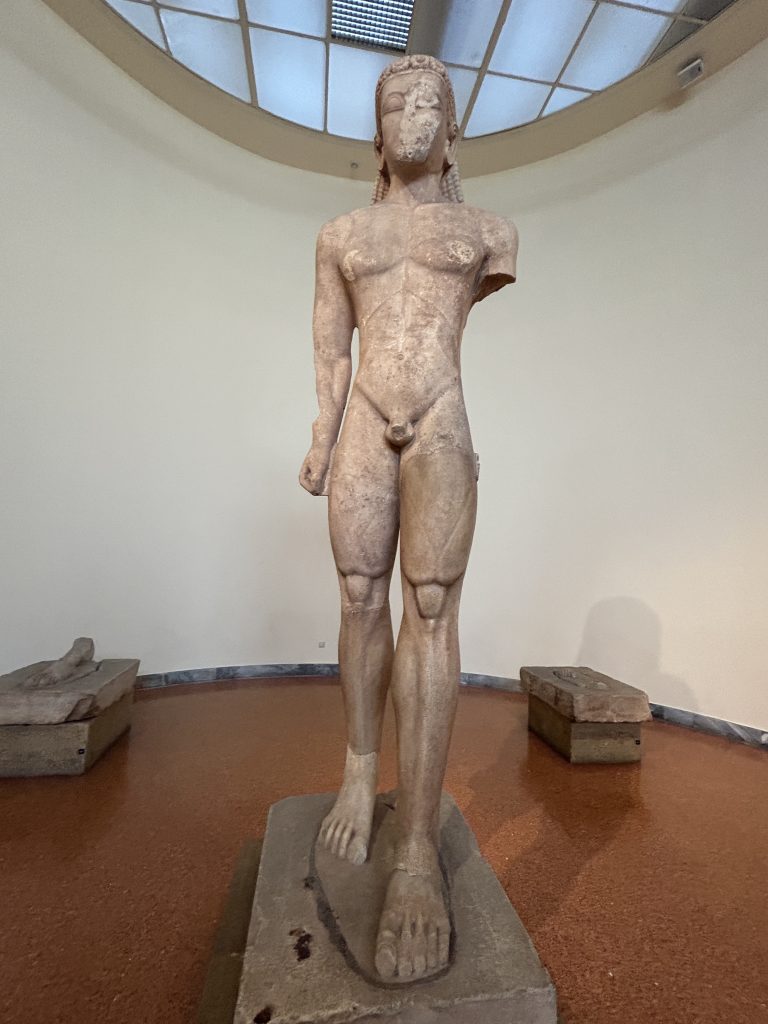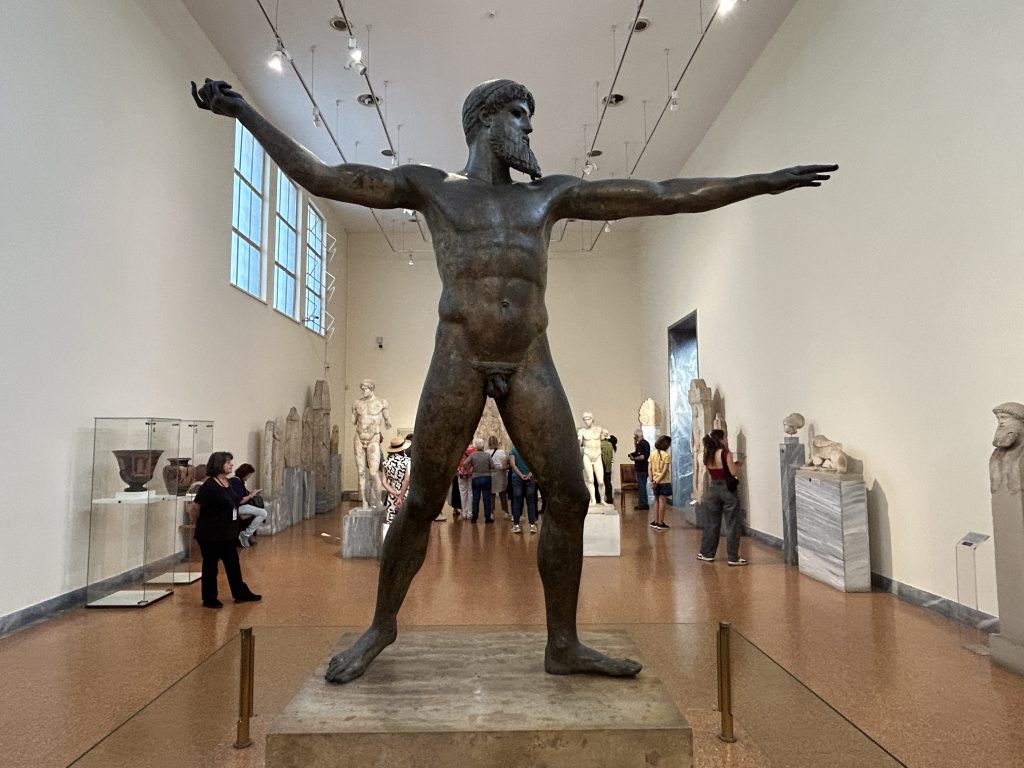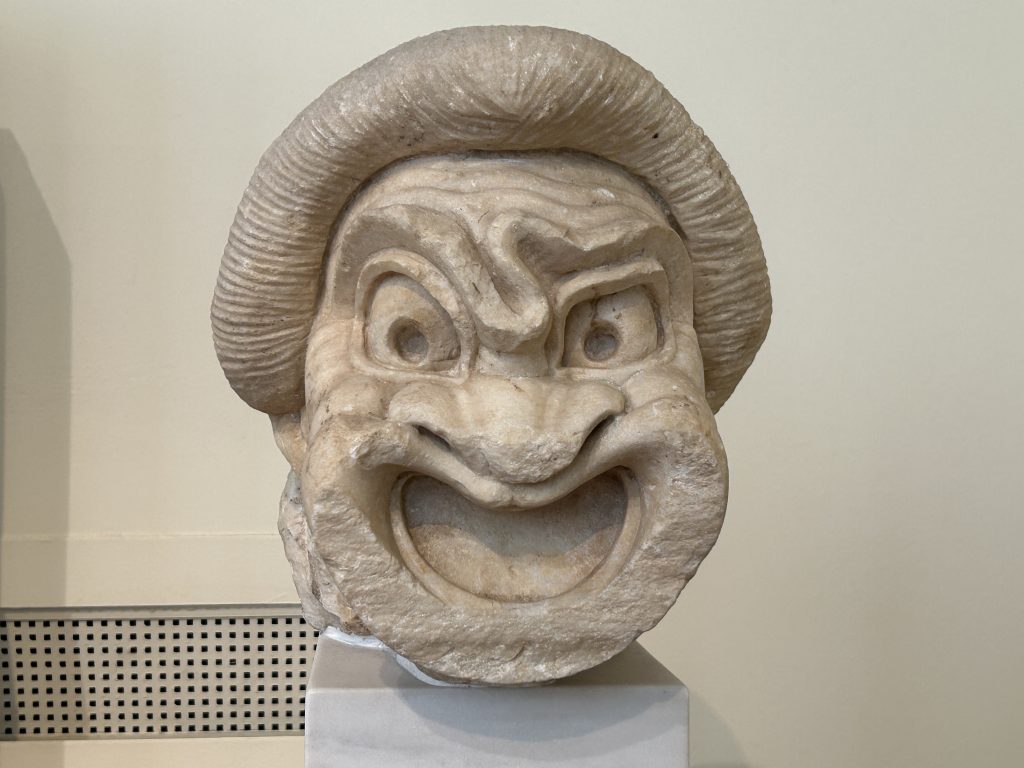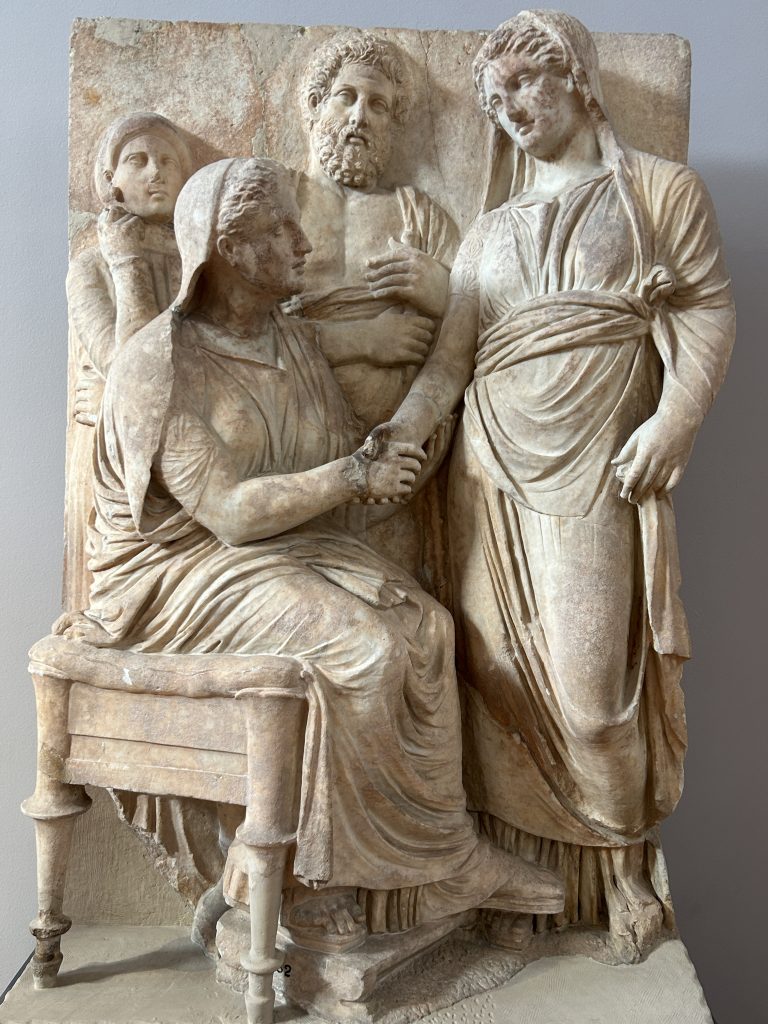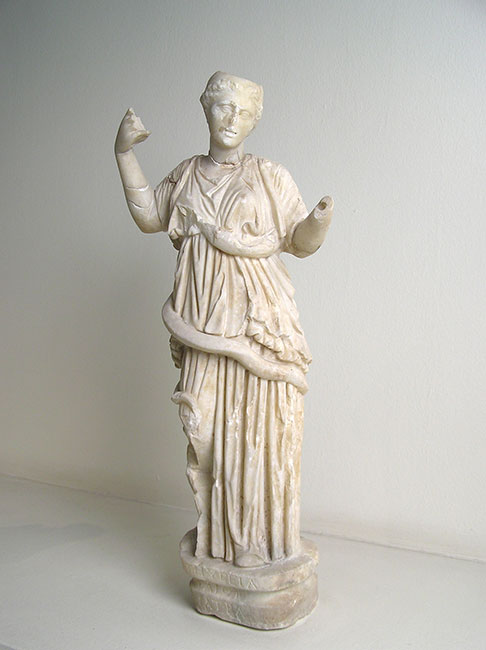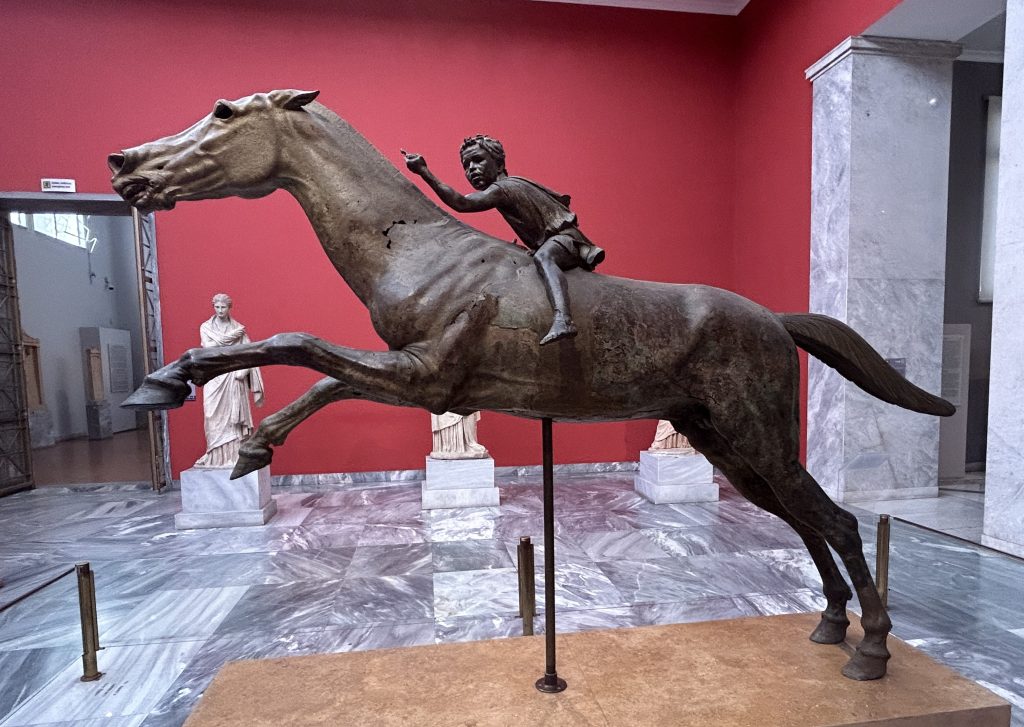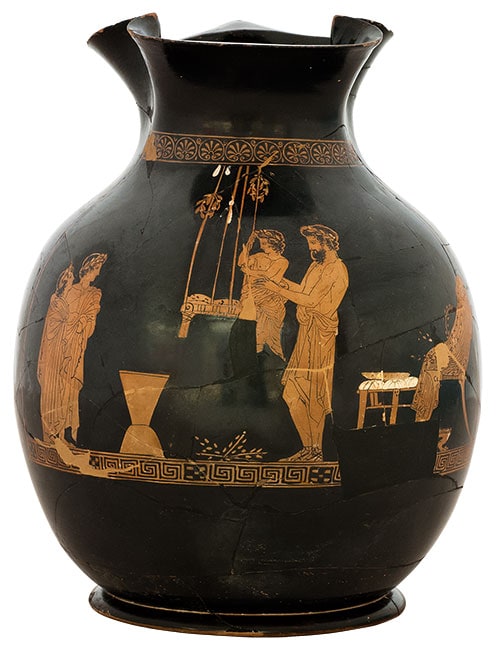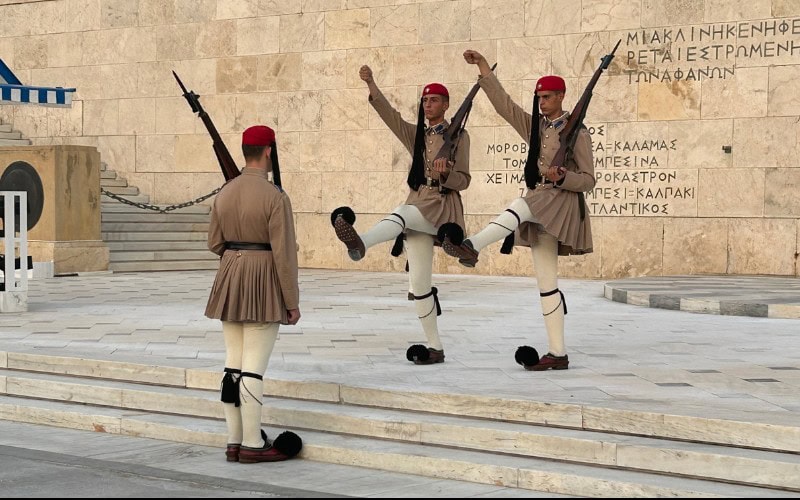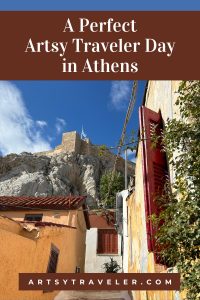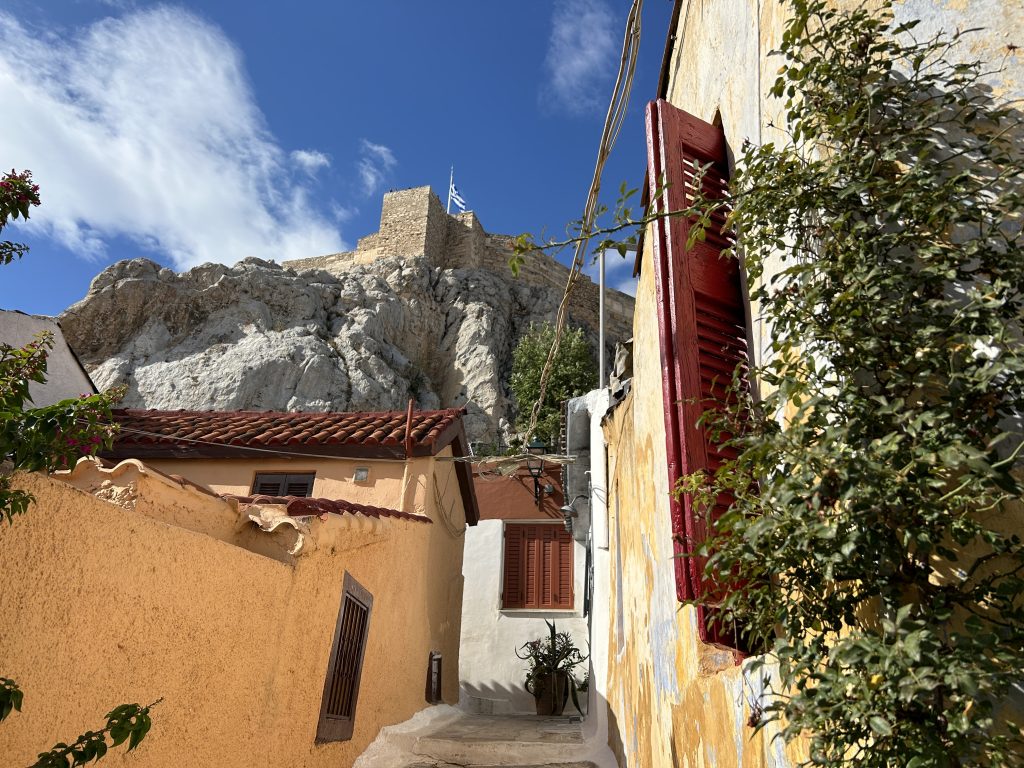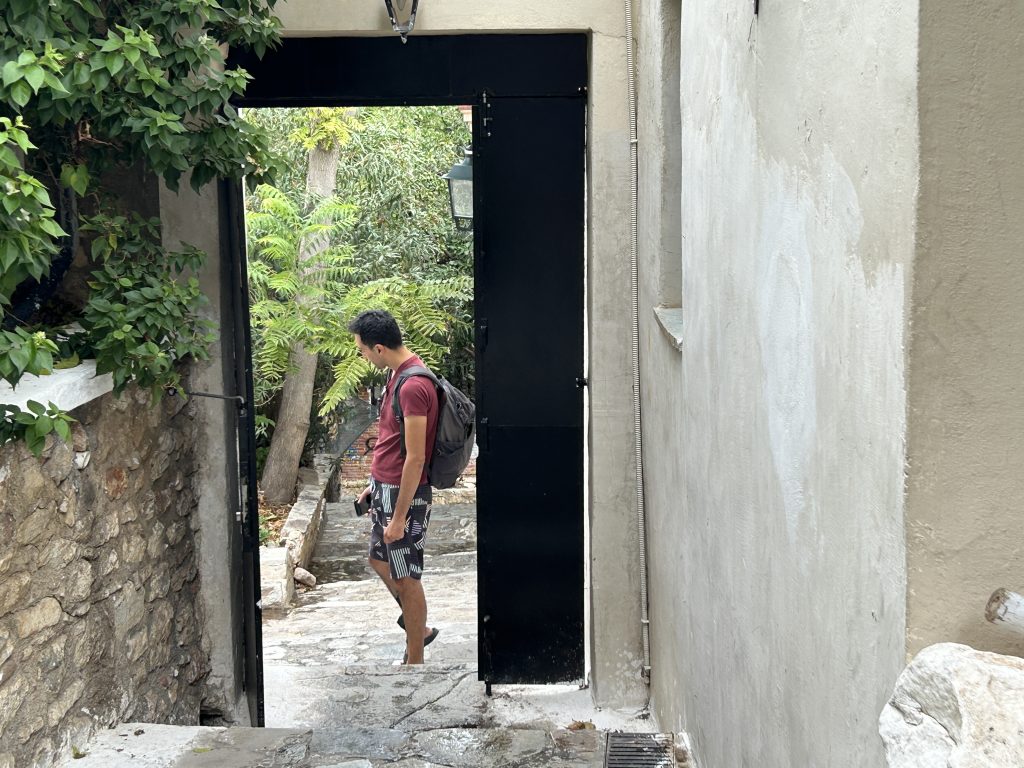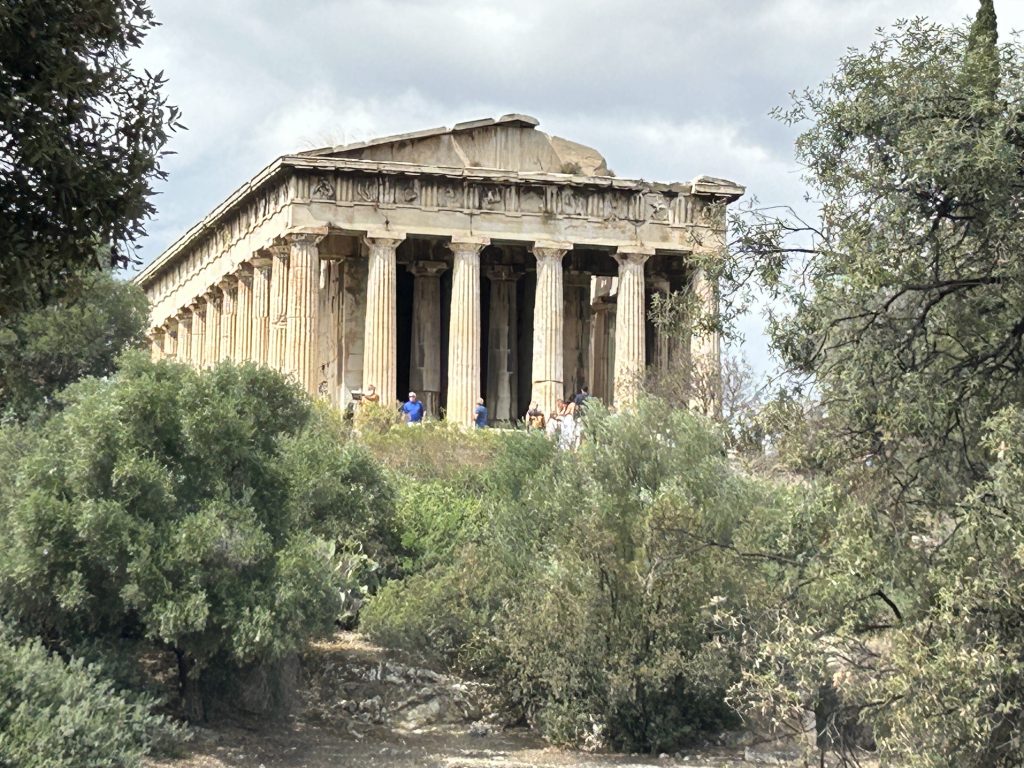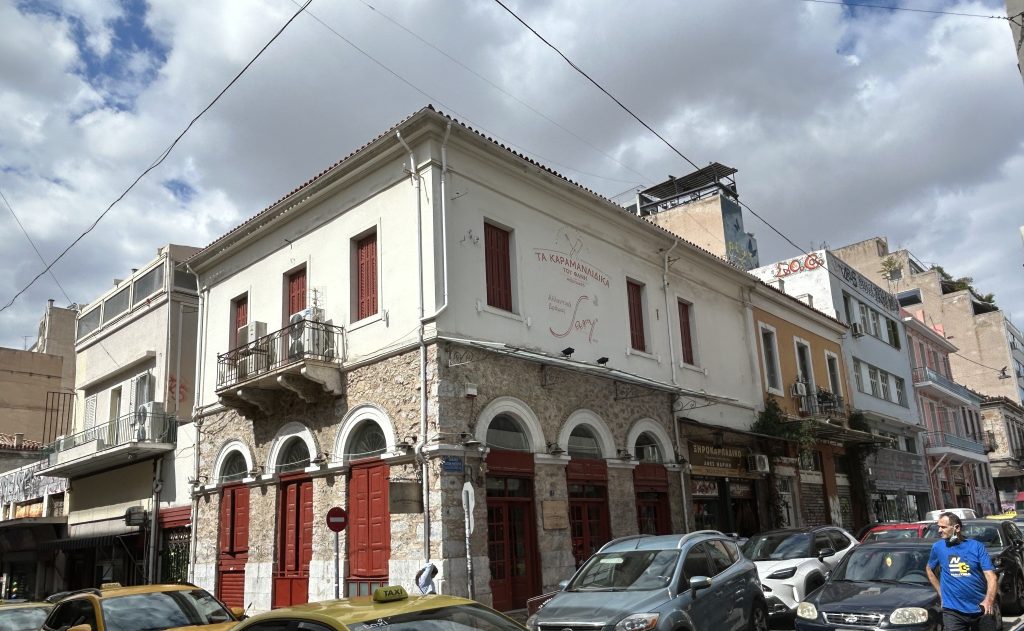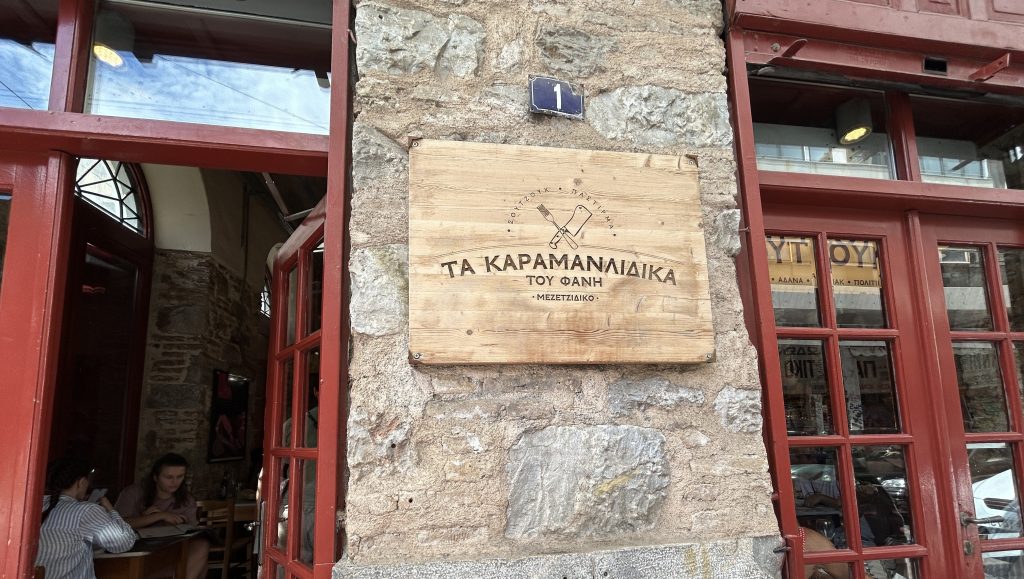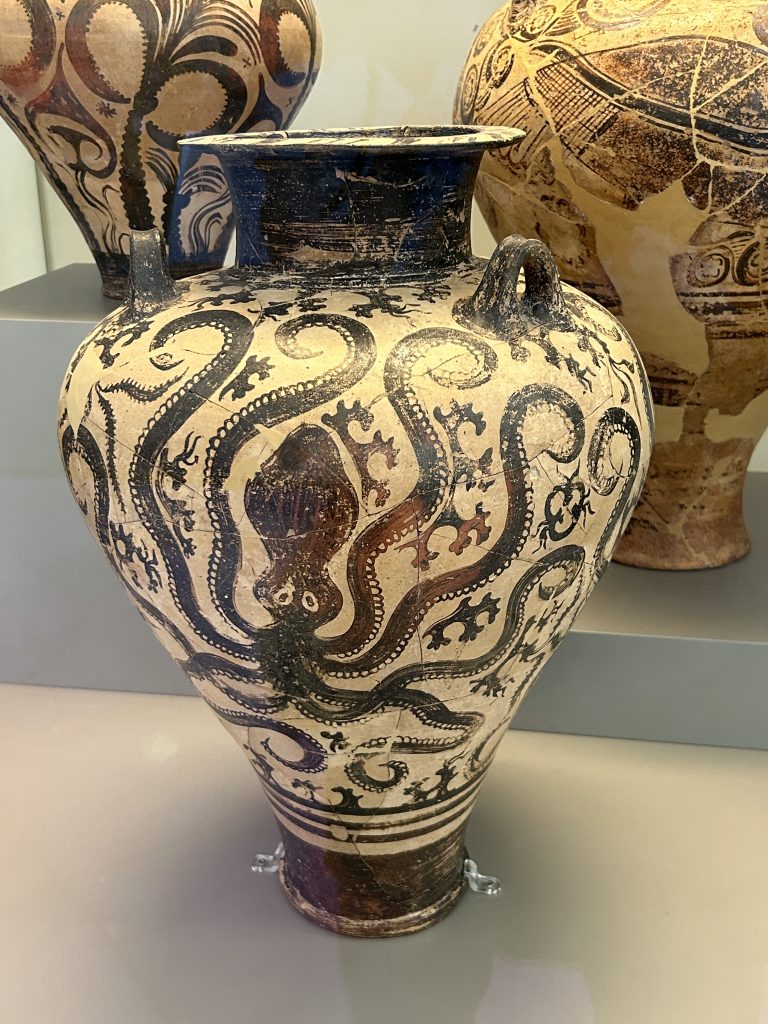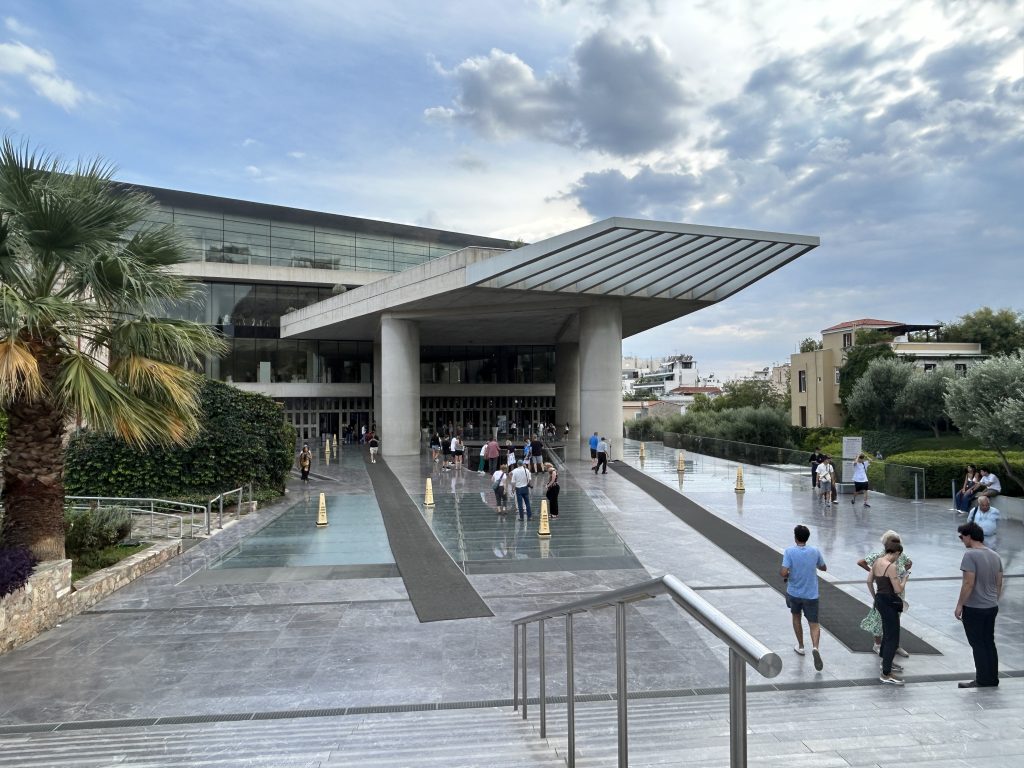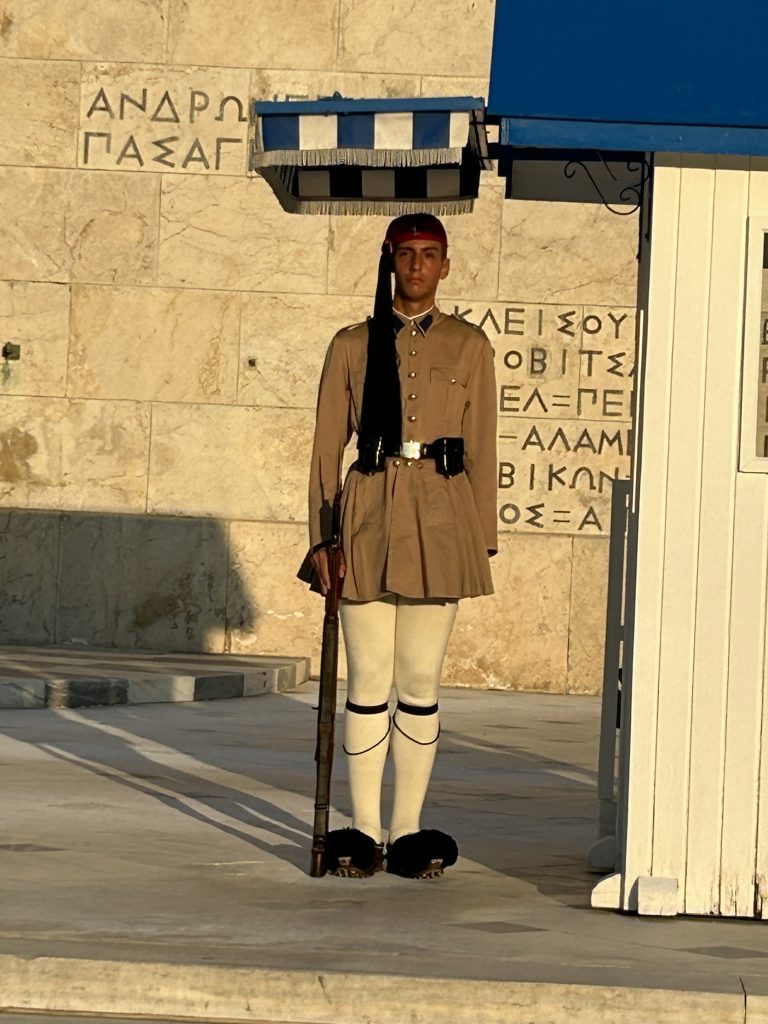UBC Museum of Anthropology in Vancouver: Why You Should Go!
The Museum of Anthropology at the University of British Columbia (UBC) is the must-see museum in my hometown of Vancouver.
While I was on an Alaskan cruise a few years back, several visitors asked me what they should see during their one day in Vancouver. I always said the anthropology museum and always received a blank stare.
Regrettably, this world-class museum is not as well known as it deserves to be. Usually, when people talk about what tourists should see in Vancouver, they say the Capilano Suspension Bridge (crowded and way over-priced), the Vancouver Art Gallery (okay), and Stanley Park (a definite yes).
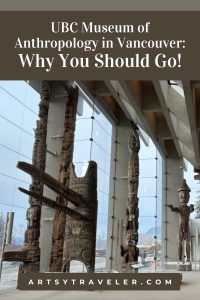
But a trip out to UBC to tour the Museum of Anthropology (MOA) is an absolute must. MOA houses an unparalleled collection of northwest coast Indigenous art and artifacts, along with exquisite exhibits of objects from cultures all over the world.
Overview
In this post, I share my recommendations for enjoying your visit to the UBC Museum of Anthropology in Vancouver, BC. I’ve also included practical information, such as hours, admission fees, and how to get there. Finally, check out what else you can see at the University of British Columbia and my suggested hotels in downtown Vancouver.
Where is the Museum of Anthropology (MOA)?
Designed by famed Canadian architect Arthur Erickson, the Museum of Anthropology (also known as MOA) is located on the campus of the University of British Columbia at the very tip of Point Grey, a peninsula that juts into the Strait of Georgia west of Vancouver’s downtown core. See #1 on the map below.
After being closed for a few years for seismic upgrading, MOA is again welcoming visitors.
Here’s the view of mountains and ocean that greets you from the rose garden on a hill above the museum.
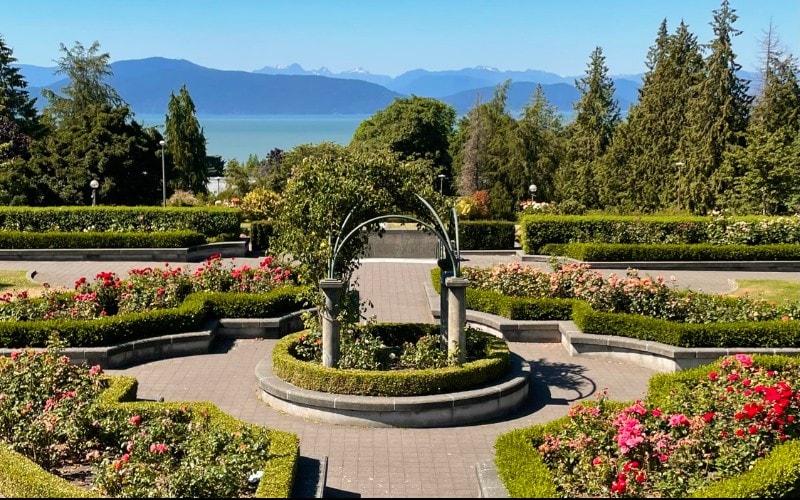
The map below shows the location of the Museum of Anthropology (#1) along with other worthwhile sites at the University of British Columbia and recommended hotels in Vancouver.
Arriving at MOA
After parking in the lot conveniently located just off NW Marine Drive and adjacent to the museum, you pass the MOA sign and a rock with a message in two languages reminding you that you are on the ancestral homeland of the Musqueam people.
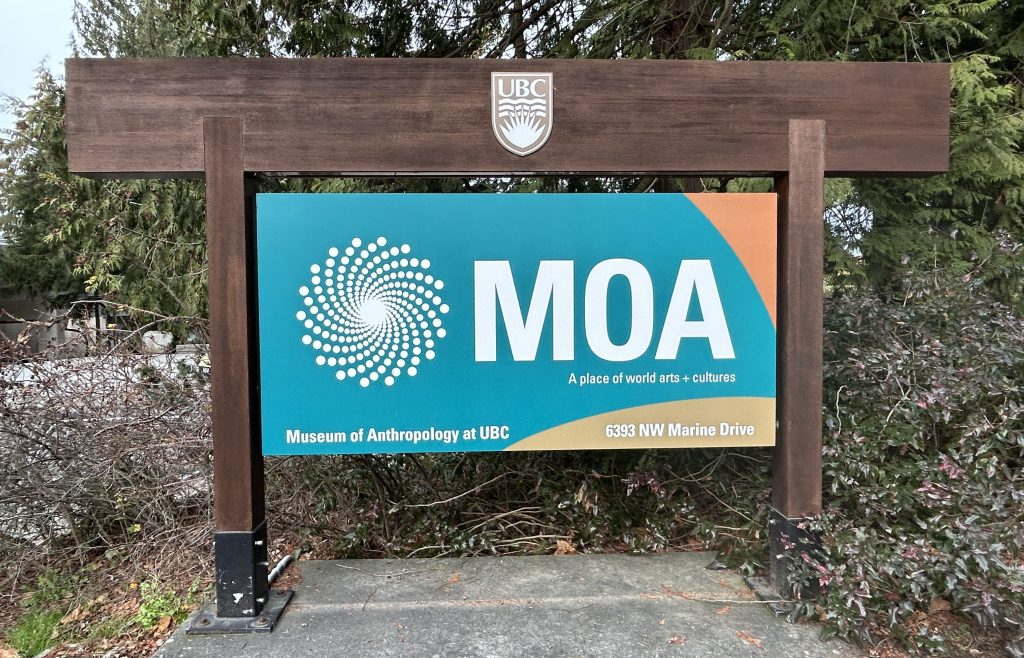
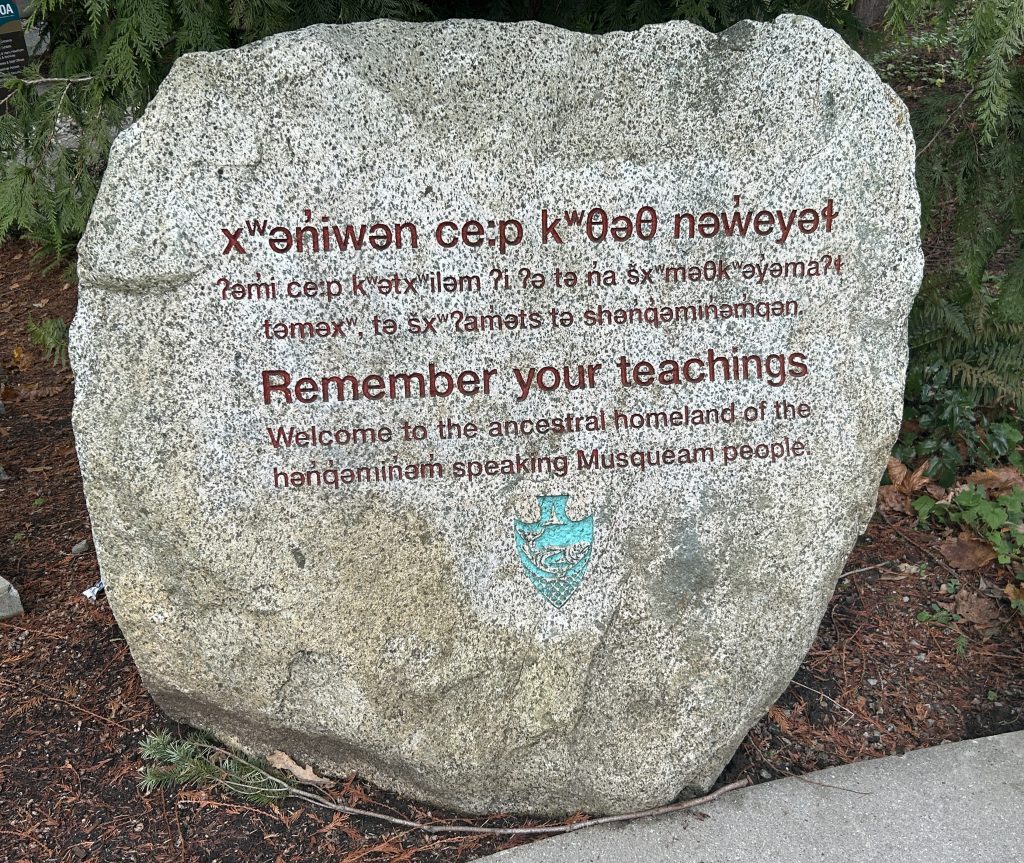
I grew up close to this area and regrettably learned very little about the people who first lived here. In recent years, great strides are being made to redress the imbalances.
One such development is the increasing use of Indigenous names for landmarks that for 150 years were known by their “settler” names.
Entering the Museum of Anthropology
Enter the spacious lobby and buy your ticket. If you have a backpack or bag, you’ll need to store it in the lockers provided (they even give you a quarter to open a locker!).
And now, get ready for some serious awesomeness! Your first stop? Walk down a shallow ramp past exhibits of local First Nations art and into the Great Hall.
On your way, read the many informative plaques to learn about the displays. Their purpose is to educate visitors about why each object or artifact is significant to the culture and heritage of the First Nations people.
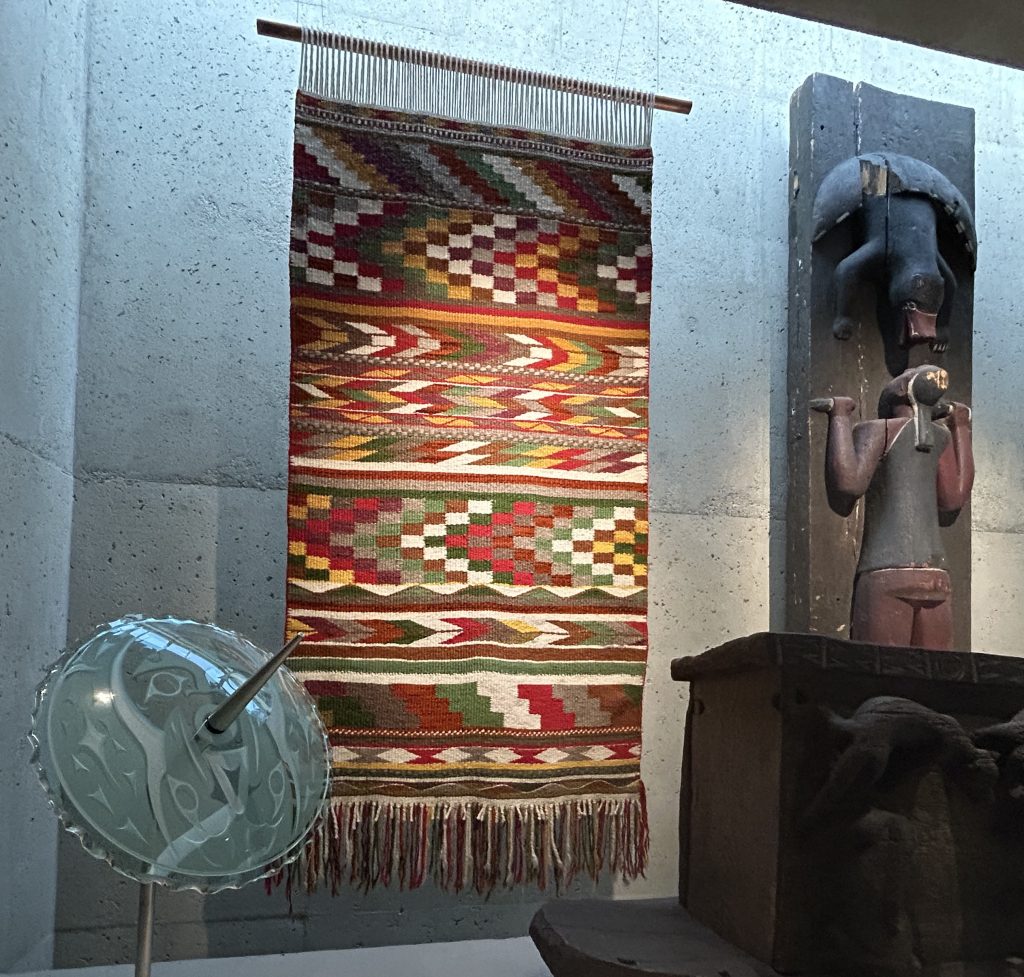
Here’s the description of the contemporary woven blanket displayed to your right as you walk down the ramp:
We dedicate this blanket to our mother Helen, our elders, and those who have gone before us. We look at this blanket as part of the tradition of education that was in place in our community for generations and is now being revived. Our ancestors speak through this weaving, through all of our weavings. In this way, they continue to share their knowledge with us.
The Great Hall
I’ve visited the Museum of Anthropology at UBC many times. But every time I walk into the Great Hall filled with one of the world’s most extensive collections of Indigenous art from the northwest coast, I feel an overwhelming sense of awe.
MOA does an excellent job of explaining the significance of each of the displays, with much of the information contributed by Indigenous artists who are carving totems and creating art today.
Stroll around this large space to get a feel for the awesomeness of the art and take time to read the explanatory plaques.
Here are some of the many totem poles that west coast First Nations people carved from cedar. Tilt your head back and marvel at the intricacy and beauty of the poles soaring to the rafters in this incredible space.
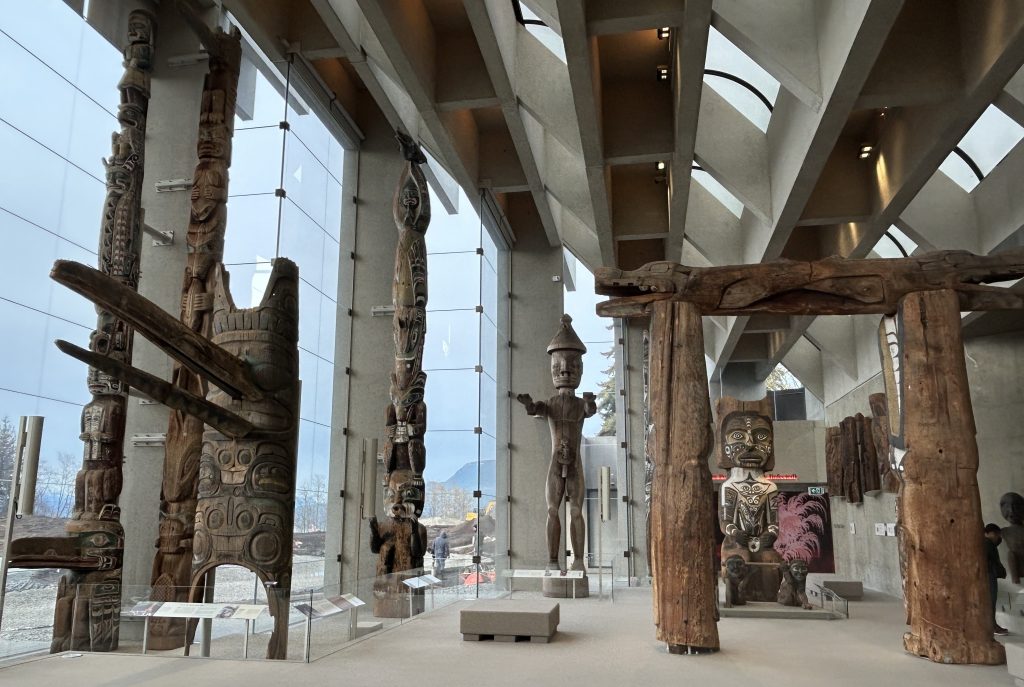
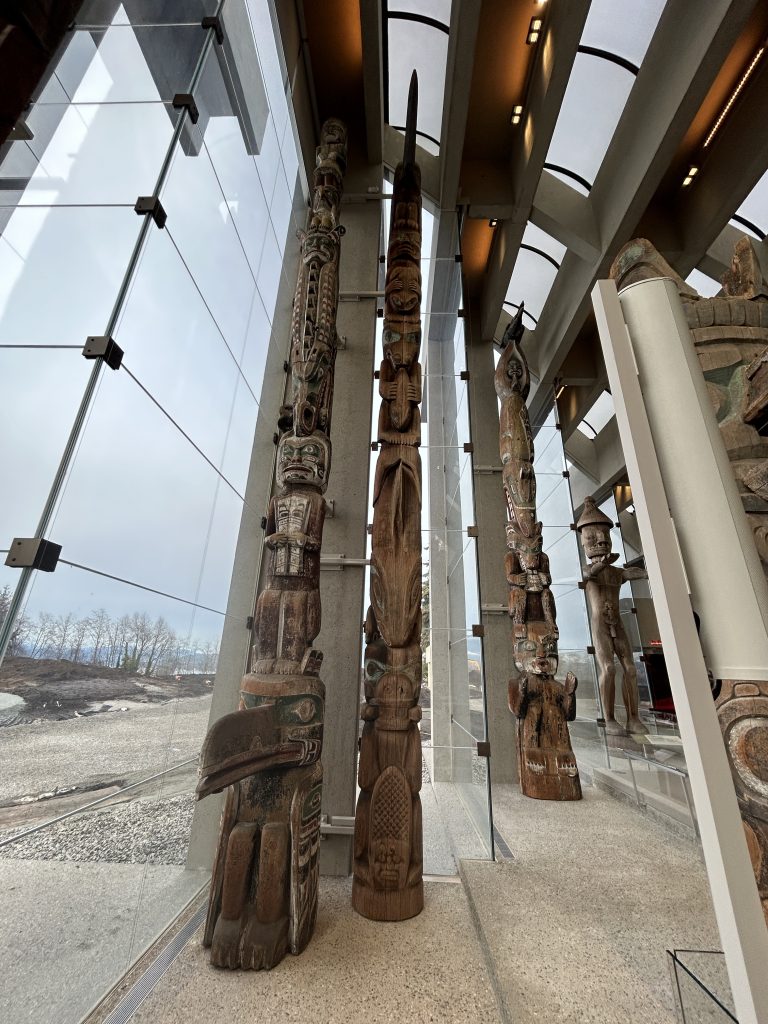
Sea-Lion House
It’s difficult to single out any one piece for more elaboration because every piece is accompanied by a fascinating story. The Sea-Lion House (Indigenous name Klix’Ken Gukwdzi) is particularly noteworthy.
According to the information provided, the First Nations community built the house in 1906 in defiance of the assimilation pressures imposed through the federal Indian Act.
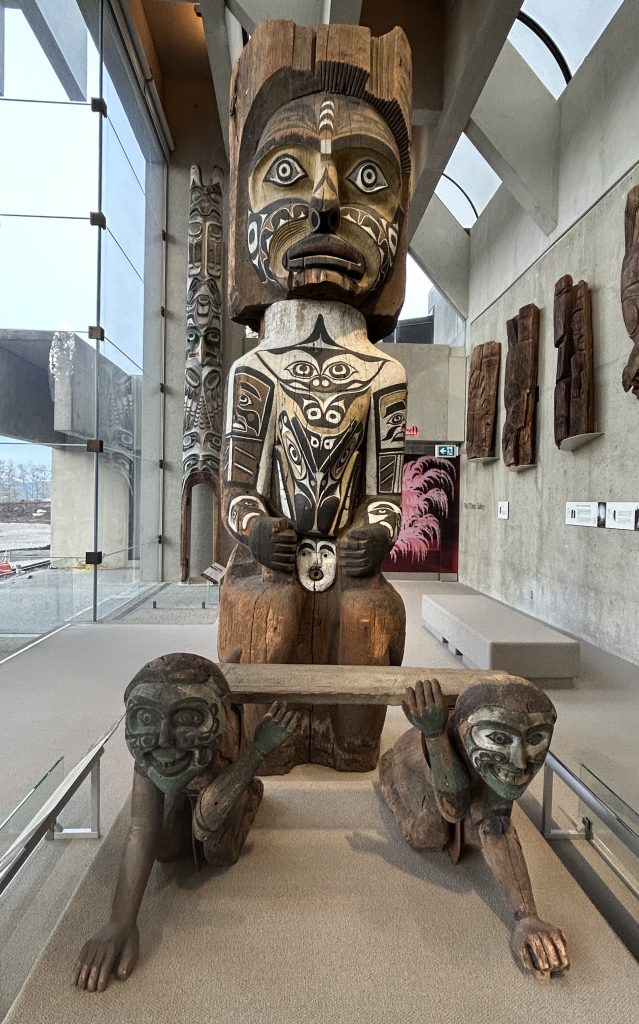
This house was the last old-style dwelling erected in the village as a home for an extended family. It’s probably one of the last examples of traditional northwest coast architecture in the entire Pacific Northwest.
Colonialism and Indigenous People
The dramatic beauty of traditional northwest coast art on display at MOA is all the more remarkable considering that for decades, many of the cultural traditions of the First Nations people in British Columbia were banned.
Potlaches were outlawed, people were not permitted to wear their masks or dance or sing their traditional songs, and their languages were systematically wiped out.
In recent decades, the devastation wrought by these draconian laws is slowly being overcome. MOA’s curators and historians are doing an amazing job of putting together thoughtful and beautiful displays that celebrate the First Nations culture and do not shy away from painful truths about the colonial past.
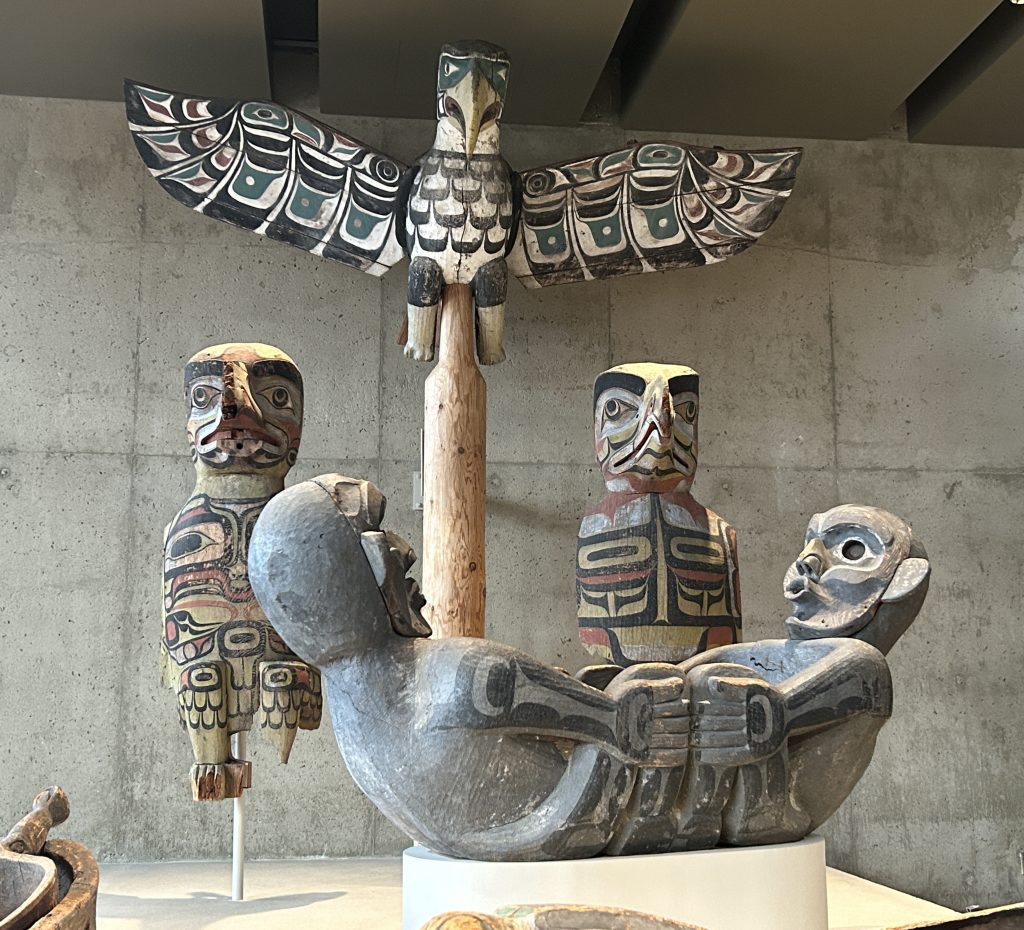
European Ceramics Gallery
After marveling at the totems and other displays in the Great Hall, return to the entrance and head to the right to tour the Koerner Collection of European ceramics.
The feeling here is completely different but no less interesting. This extensive collection features ceramics displayed in a darkened room that every time I’ve visited has been virtually empty.
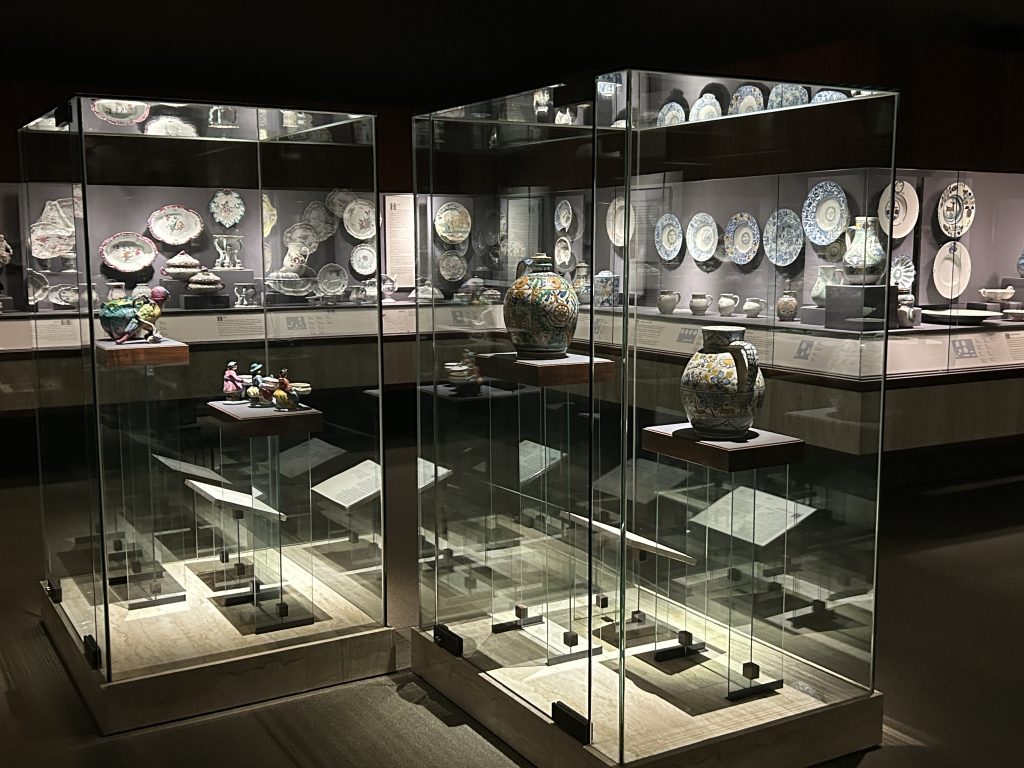
I enjoyed learning something about the history of ceramics and was fascinated by so many incredible examples of ceramic art, some dating back millennia.
These little guys are particularly adorable. They were made in the 18th century at the Holič factory in Hungary.
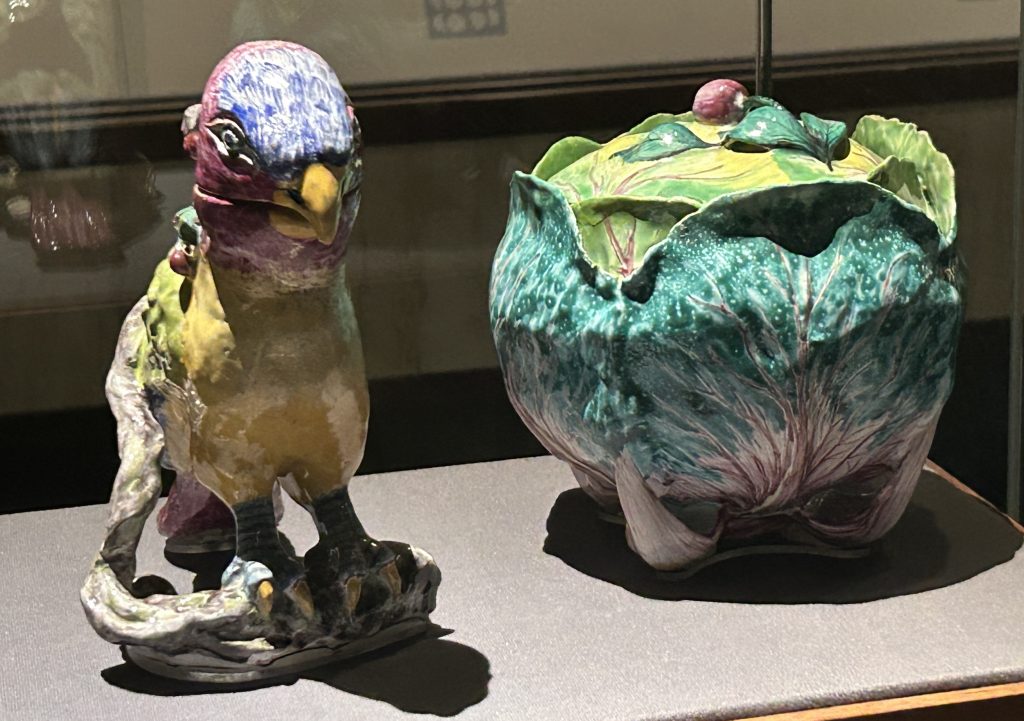
Multiversity Galleries
From the ceramics exhibition head back through the main hall and explore the museum’s multiversity galleries. MOA pioneered the use of open storage displays to exhibit their massive collection of objects from around the world.
These message greets you at the entrance to the Multiversity Galleries:
Enter here to meet creative expressions from around the globe. The galleries are laid out like a map of the world, joined by oceans and rivers. Pull open the drawers. Look up more information at the computer stations. Experience how connecting objects and people can bring the collection to life.
Here’s a portion of the South Pacific collection.

Northwest Coast First Nations Art and Objects
Don’t miss the collection of Pacific Northwest objects and art created by the area’s First Nations people. It is by far the largest collection in the galleries and features impressive displays of sculptures, masks, baskets, hats, textiles, and much more—some historical, some contemporary.
This massive Raven mask has been passed down for generations and, like all the exhibits in the First Nations collection, holds both artistic and spiritual significance along with precious knowledge for the communities that used it in ceremonies.
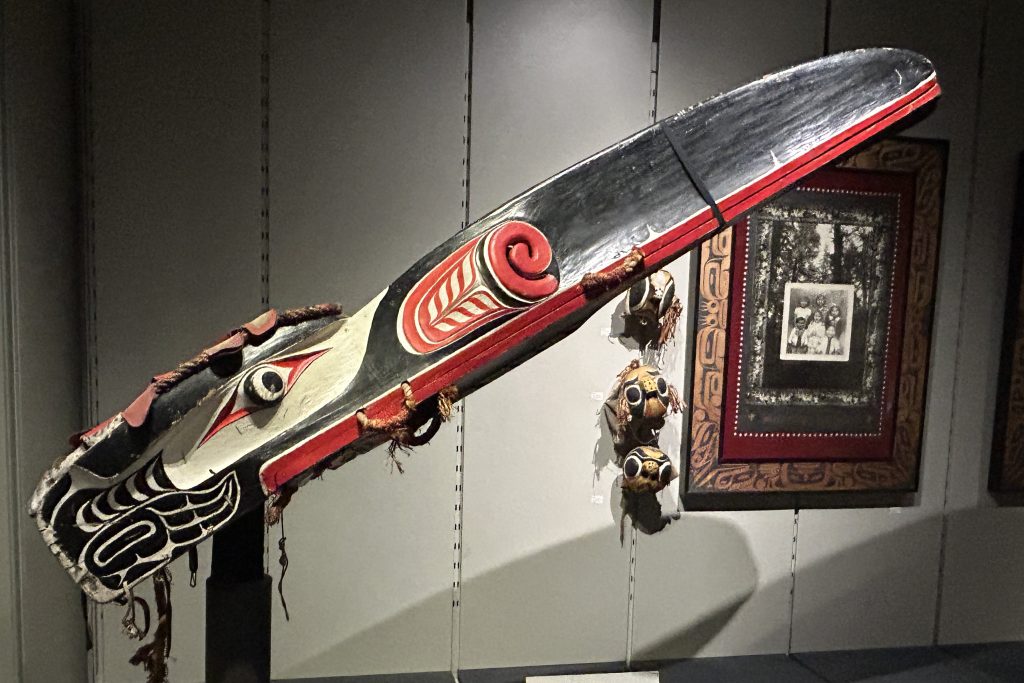
World Cultures
MOA features an impressive collection of thousands of ethnographic objects and artifacts from around the world. You’ll see magnificent objects from the Americas, Africa, Asia, and Oceania along with thoughtful and comprehensive descriptions.
Here are just a few examples of the breadth and astonishing variety of the collection the museum features.

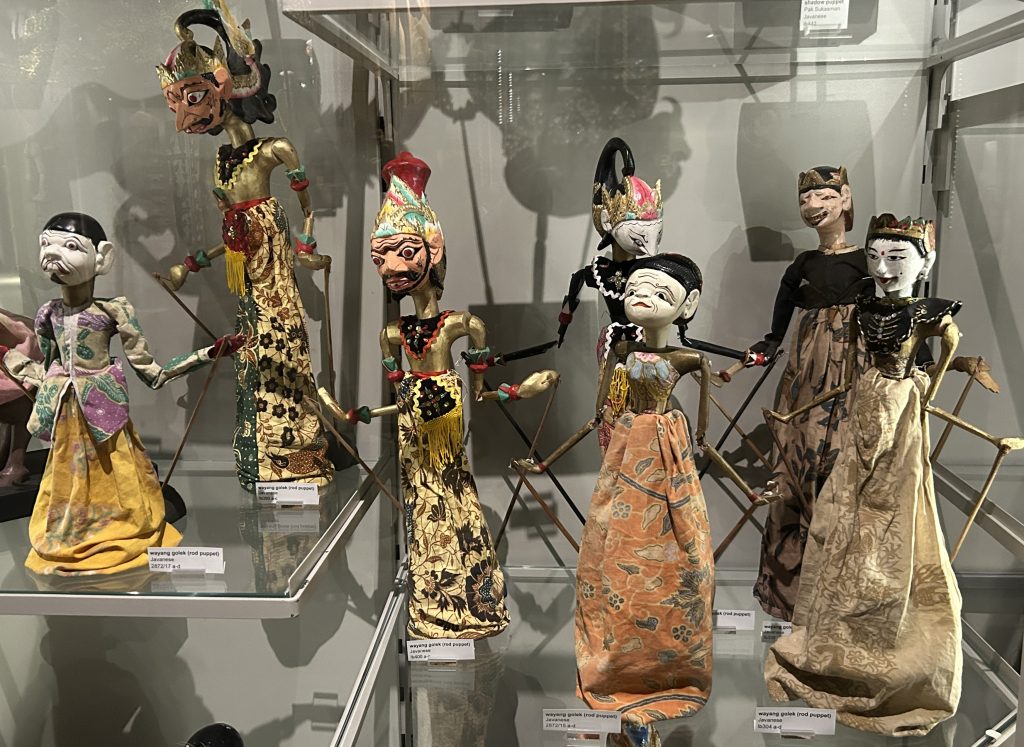
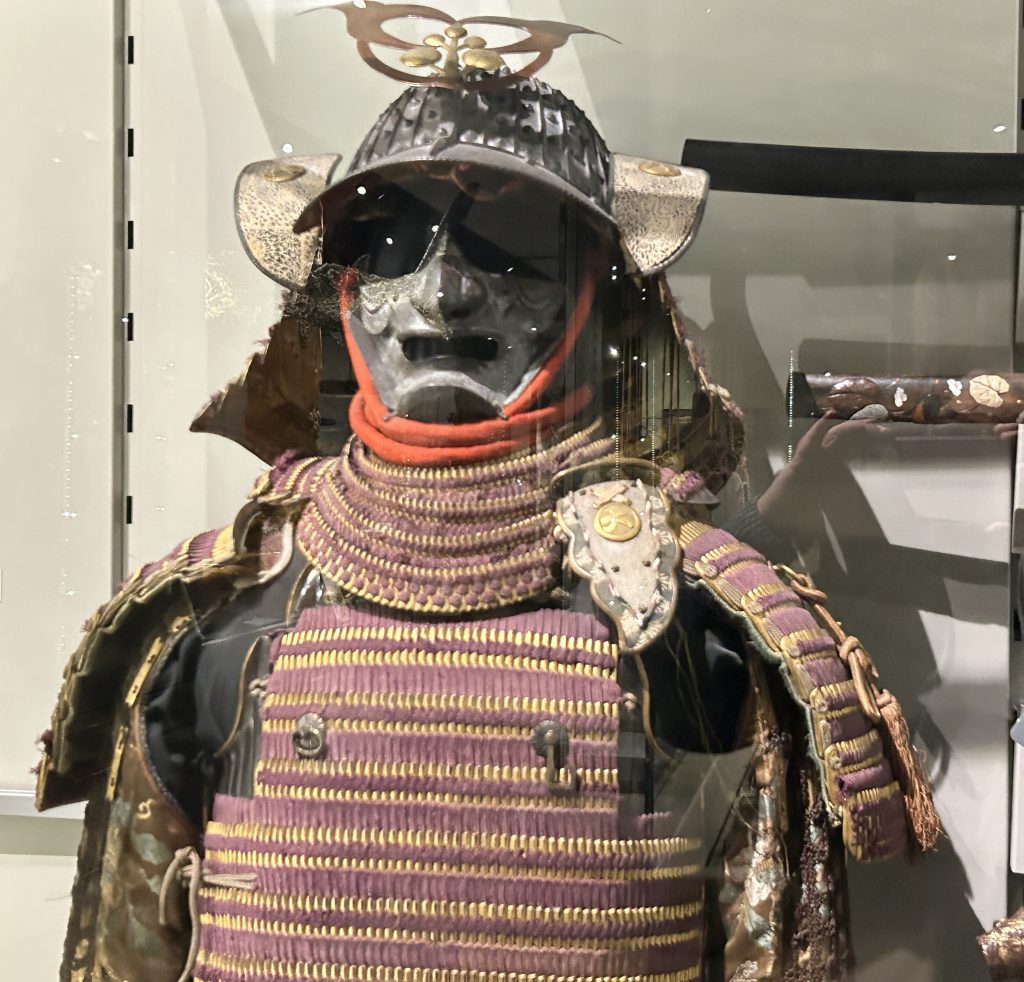
Take your time to really look at these incredible objects. You could easily spend hours. And don’t forget to open the drawers! You never know what you’ll discover.
Works by Bill Reid
Acclaimed Haida artist Bill Reid is renowned for his sculptures and jewelry, several breathtaking examples of which are displayed in the museum.
The centerpiece is Bill Reid’s sculpture called The Raven and the First Men.
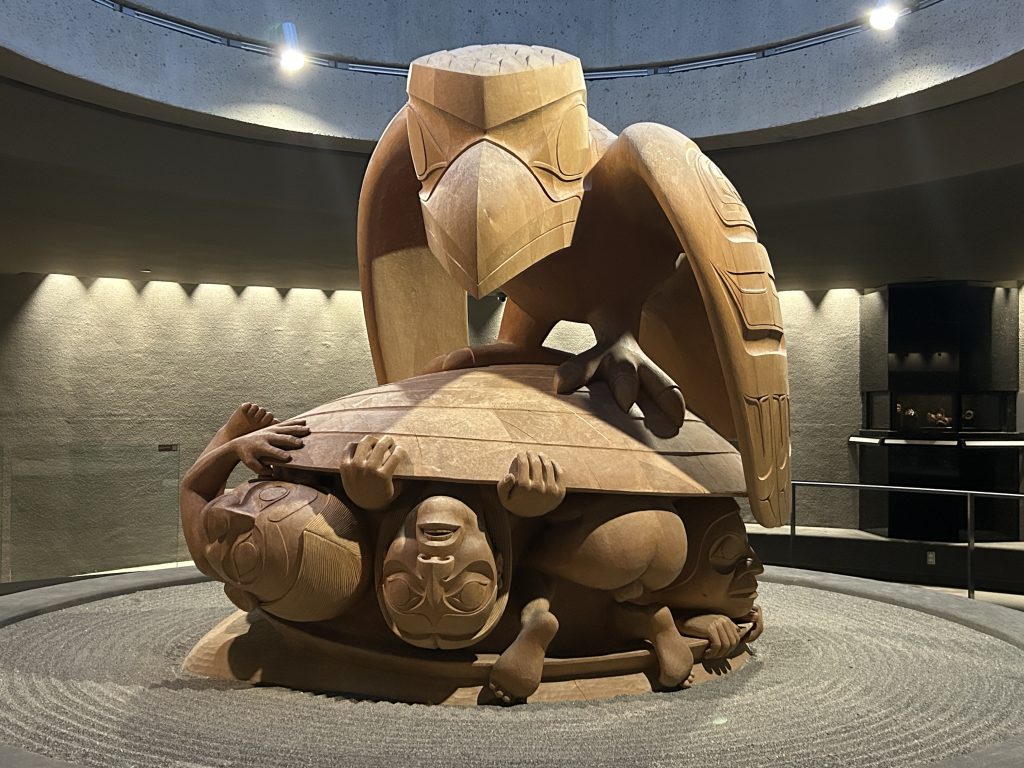
This stunning sculpture, made from a 4.5-ton cube of 106 laminated beams, took several years to complete. The museum acquired it in 1980.
Here is the legend of Raven and the First Humans as presented on MOA’s excellent website:
One day after the great flood Raven was walking along the beach at Rose spit in the Queen Charlotte Islands when he heard a sound emanating from a clamshell at his feet. He looked more closely and saw that the shell was full of small humans. He coaxed, cajoled and coerced them to come out and play in the wonderful new world. Some immediately scurried back into the shell, but eventually curiosity overcame caution, and they all clambered out. From these little dwellers came the original Haidas, the first humans.
Walk around the sculpture and be constantly enchanted by how it changes. This piece is a marvel.
Special Exhibitions
In addition to the three areas described in this post, MOA has areas devoted to special exhibitions. These vary throughout the year, so check the website to find out what’s on during your visit.
Tours of MOA
You can choose to take one of the free guided tours the museum offers with one of the new Cultural Interpreters. Learn about the collection from an Indigenous perspective and gain insight from Cultural Interpreters who have a personal connection to the belongings and treasures.
Tours last 45 to 60 minutes and are offered Tuesday to Thursday at 11 am, 1 pm and 3 pm, and Friday to Sunday at 1 pm and 3 pm.
Make sure to check the website to confirm the schedule.
Practical Information
The Museum of Anthropology is open Tuesday to Sunday from 10 am to 5 pm (Thursdays to 9 pm). It’s closed on Christmas Day and New Year’s Day.
Museum admission currently costs $25 for adults, $22 for seniors (65+) and students, and $10 for youth. Children under 5, Indigenous people, UBC students, staff and faculty, and MOA members are admitted free. The website has the latest rates.
Museum Gift Shop
The museum’s small gift shop features with some pretty nice stuff, including plenty of examples of Indigenous art, jewelry and crafts, along with books and souvenirs.
Accessing the Museum of Anthropology from Downtown Vancouver
The Museum of Anthropology is located on the University of British Columbia campus, about 20 minutes from downtown Vancouver (#2 in the map at the beginning of this post). Here are some options for getting there from downtown Vancouver:
By Public Transit: Take the #4 UBC Bus from various downtown locations to the UBC Exchange or take the #99 B-Line bus to the UBC bus loop. From there, it’s about a ten-minute walk to MOA. Check the Translink website for routes, fares, and schedules.
From Vancouver International Airport (#3), take the Canada Line Skytrain to the Olympic Village station and then transfer to the #84 bus to UBC.
By Car: The museum is located at 6393 Northwest Marine Drive on the UBC campus. Ample parking is available at the museum, and parking fees are typically in line with campus parking rates.
Walking or Cycling: If you’re staying nearby, you can reach the museum on foot or by bicycle.
Other Attractions Near the Museum of Anthropology
If you have time to explore further, there are several other interesting attractions nearby.
Beaty Biodiversity Museum
Located a short walk from MOA, the Beaty Biodiversity Museum (#4) on the UBC campus is another excellent museum with exhibits showcasing the incredible biodiversity of our planet. Here are some pictures I took on a visit there.
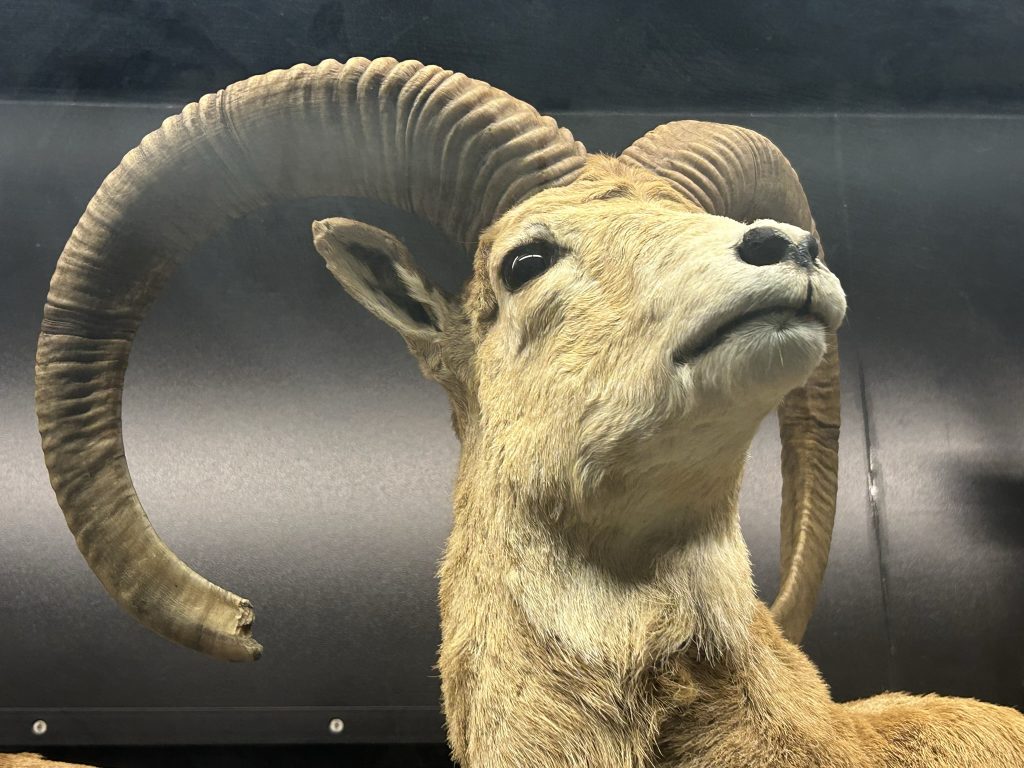

You could spend hours browsing the extensive displays. With its wonderful collection of taxidermy animals, it’s a great place to take children.
UBC Botanical Garden
Another nearby gem is the UBC Botanical Garden (#5). Here, you can explore themed gardens, hiking trails, and a diverse collection of plant species from around the world. Established in 1916, the garden is Canada’s oldest university botanic garden.
I love going in the late spring and summer. Take your walking shoes; there’s a lot to see and it’s big!
Pacific Spirit Regional Park
For nature lovers, Pacific Spirit Regional Park (#6) offers extensive walking and hiking trails through lush forest, providing a peaceful retreat from the city. It’s a great spot for a post-museum stroll.
Nitobe Gardens
I adore Nitobe Gardens (#7) and pop in almost every time I visit the campus of the University of British Columbia. The gardens are a short walk from MOA so you can easily include it in your visit.
Considered one of the most authentic Japanese gardens outside of Japan, Nitobe Gardens is just gorgeous no matter what time of year you visit. But the best times are in spring when the cherry blossoms are in full bloom and again in the fall when the maple leaves are bright red.
Here are two photos taken in late spring.


Where to Stay in Vancouver
Vancouver is a major tourist destination for Canada-bound travelers, and as such has plenty of excellent hotels. Your best bet is to stay in a hotel downtown, preferably one with a view of the magnificent North Shore mountains and the ocean.
Here are my three favorite hotels in Vancouver:
Granville Island Hotel
Located on Granville Island about a ten-minute bus ride from downtown Vancouver, the Granville Island Hotel is a great choice if you’re looking something a little bit different.
You can stroll around the Granville Island Market and other shops, take in a performance at nearby Bard on the Beach or the Arts Club Theatre, and listen to the seagulls as you drift off to sleep.
Pan Pacific Vancouver
Pan Pacific Vancouver is one of Vancouver’s most iconic hotels with gorgeous views of the cruise ships and freighters in Burrard Inlet with the North Shore mountains beyond.
This hotel is upscale, expensive, and right in the center of the action. It’s a great choice if you’re staying overnight in Vancouver before taking an Alaskan cruise.
The Westin Bayshore
I love The Westin Bayshore and often stay here if I’m taking a “town” break from my home on nearby Bowen Island.
The Bayshore’s location right next to Stanley Park is a huge selling point. Rent a bike and ride around the park, then return to the hotel and enjoy a drink overlooking Vancouver’s stunning harbor.
Vancouver Tours
GetYourGuide offers a variety of tours of Vancouver and the surrounding areas. If you have a full day to spare, then I recommend you head up to Whistler.
On this tour, you’ll ride the Sea to Sky Gondola in Squamish, explore Whistler Village (don’t miss the Audain Art Museum), and visit stunning Shannon Falls on the world-famous Sea-to-Sky Highway.
After visiting MOA, you may feel inspired by the various Indigenous portrayals of the Orcas that swim in the local waters. Treat yourself to a whale watching experience.
Conclusion
The Museum of Anthropology in Vancouver is a cultural and artistic treasure well worth a few hours of your time.
The sweeping views of mountains and sea you’ll enjoy on the journey out to the University of British Columbia are reason enough to visit, but you’ll also learn so much about the Indigenous cultures of the Pacific Northwest and get a chance to marvel at the the objects on display from around the world.
The ingenuity of people never ceases to amaze me, which is why I love museums like this.
Have you visited the Museum of Anthropology? What were your favorite exhibits? Share your recommendations and observations in the Comments below.
Here are some more posts about museums I’ve visited and heartily recommend:



